70 Inch Tvs At Best Buy
Best TV 2021: brilliant budget to premium 4K Ultra HD TVs
Included in this guide:
Best TV Buying Guide: Welcome to What Hi-Fi?'s round-up of the best TVs you can buy in 2021.
While buying a new TV is absolutely one of the most exciting things you can do with your clothes on, there's also one big problem: there are so damn many to choose from that it can be almost impossible to work out which is best for you. But before you tumble down the well of indecision, allow us to take you by the hand and lead you along the path to TV perfection.
We've run the rule over all the major 4K and 8K televisions we've tested to bring you the best of the best. If a TV is on this list it's a bona fide belter, so you know you're getting top bang for your buck.
These TVs are the very best options for feasting your eyes on all the Ultra HD content that's now available – the likes of Amazon Prime Video, Netflix, Disney Plus, Google Play Movies, Apple TV and Sky Q are jam-packed with 4K at this point. Plus you can buy 4K Ultra HD Blu-rays. Basically, there's never been a better time to take the plunge.
Below you'll find TVs of various sizes, budgets and technologies, from 55-inch TVs to OLED TVs, small TVs to cheap TVs, and even 8K TVs. If gaming is your priority, take a look at our round-up of the best gaming TVs you can buy, which goes into extra detail on game-specific features to look out for. And if the biggest TV isn't quite big enough, check out our list of the best projectors.
Do also take a look at our guide on how to choose the right TV for your needs, and check out our round-up of the best TV wall mounts if you're looking to get your set on the wall.
Best TV
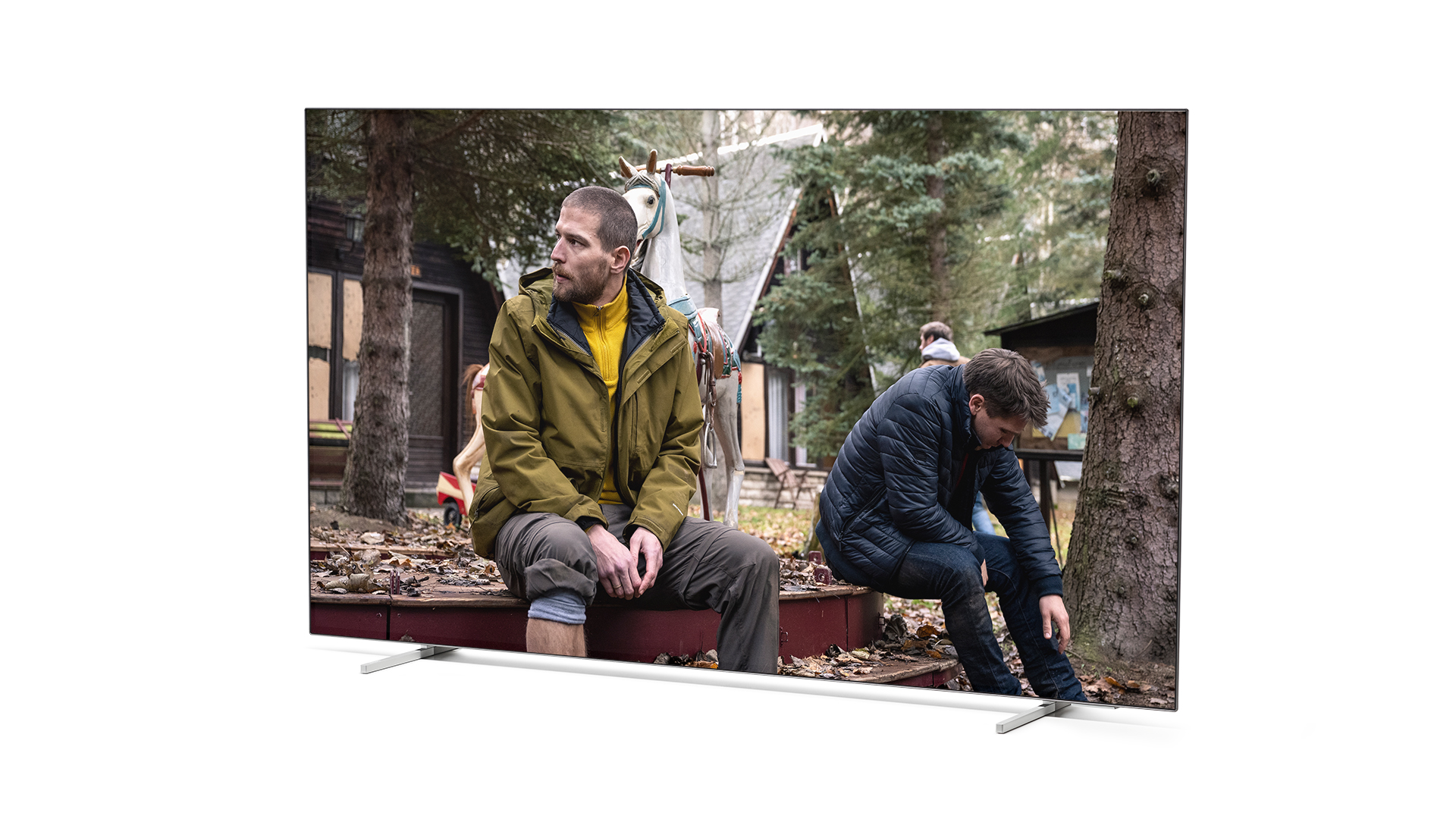
1. Philips 48OLED806
Simply the best picture around at this most convenient of sizes
Specifications
Screen size: 48in (also available in 55in, 65in, 77in)
Type: OLED
Backlight: not applicable
Resolution: 4K
HDR formats supported: HDR10, HLG, Dolby Vision, HDR10+
Operating system: Android TV 10
HDMI inputs: 4
ARC/eARC: eARC
Optical output: Yes
Dimensions (hwd, without stand): 62 x 107 x 6.8cm
Reasons to buy
+Sharp and punchy but natural +Full apps and HDMI 2.1 features +Dolby Vision and HDR10+
Reasons to avoid
-Sound can be bettered -Tricky to adjust for the best picture
In a world of ever larger TVs, the 48-inch OLED remains a beacon of hope for those with more modest needs. The Philips 48OLED806 is one of the second generation of such televisions, which promise genuine flagship performance at a more manageable screen size – something that's impossible to find on the LCD side of the market.
You might have a smaller living space, or want a great gaming TV, a screen for the bedroom or perhaps the 48-inch option is a compromise with your less AV-enthusiastic housemate. Whatever the situation, the 48-inch OLED is an excellent choice, and the Philips 48OLED806 is the best 48-inch OLED you can currently buy.
It takes more effort than most to find the best picture settings, and the default picture presets offered for each signal type are often less than ideal (Dolby Vision signals don't activate a proper Dolby Vision mode, for example), but with a bit of tweaking the OLED806 can be made to look both very accurate and supremely sharp and punchy. The performance is further enhanced by the beautiful Ambilight technology, which extends the onscreen action to the wall around the TV in the form of coloured light.
Read more
Last year's Philips OLEDs, while generally excellent, were notably lacking next-gen gaming features, but that isn't the case with the OLED806, which has two 48Gbps HDMI 2.1 sockets that support 4K@120Hz, Variable Refresh Rate and Auto Low Latency Mode. Input lag is very low, at around 14ms, and there's an HGiG picture setting for more accurate HDR tone mapping.
One thing to bear in mind is that one of the two HDMI 2.1 sockets is also the one that handles eARC (Enhanced Audio Return Channel), which means that if you have two HDMI 2.1 sources you're not also going to be able to send sound via eARC to a soundbar or AV amplifier. This is a limitation of all TVs that we've tested that have two HDMI 2.1 sockets and, unlike those others, Philips does somewhat mitigate the issue by supporting standard ARC via its other three HDMI sockets.
While we'd certainly suggest taking advantage of the eARC/ARC functionality by adding a separate soundbar or AV receiver, the Philips OLED806 does sound decent by TV standards, producing a more detailed and dynamic sound than most (though not Sony's A80J or A90J).
All told, the 48OLED806 is a superb TV choice, and the 65-inch version is brilliant, too – you can read the review of that model by clicking below. You'll also see the latest, lowest prices for all versions of the OLED806 (it's also available in 55-inch and 77-inch sizes) if you scroll just a tiny bit further.
Read the full Philips 48OLED806 review
Read the full Philips 65OLED806 review
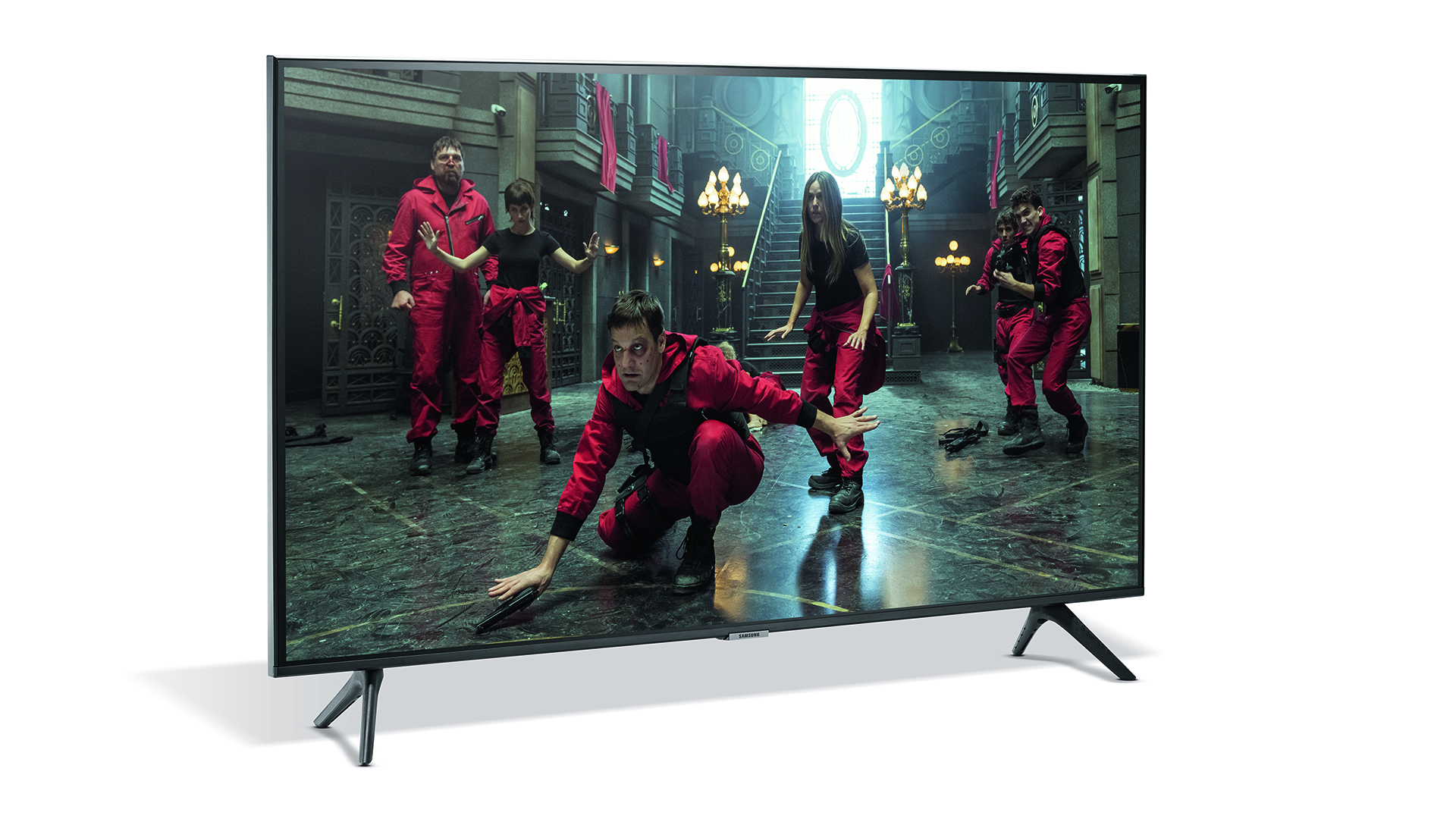
2. Samsung UE43AU7100
You don't need a bottomless bank account or a cavernous room to enjoy great picture quality
Specifications
Screen size: 43in (also available in 50in, 55in, 58in, 65in, 70in, 75in, 85in)
Type: LCD
Backlight: LED
Resolution: 4K
HDR formats supported: HDR10, HLG, HDR10+
Operating system: Eden (Tizen)
HDMI inputs: 3
ARC/eARC: eARC
Optical output: Yes
Dimensions (hwd, without stand): 56 x 96 x 6cm
Reasons to buy
+Balanced, consistent picture quality +Strong smart features +Excellent value for money
Reasons to avoid
-Some mild colour compression -Sound doesn't project well -Limited gaming features
Look up 'unassuming' in the dictionary and you'll probably find a picture of the Samsung UE43AU7100. This 43-inch LCD TV doesn't flaunt a particularly flamboyant design, doesn't sell for a particularly outrageous price – either high or low – and its features list is certainly no Lord Of The Rings-style epic.
You don't have to spend long in the UE43AU7100's company, though, to realise that a TV doesn't have to be an extrovert to stand out from the crowd. Solid processing and a thoughtful, balanced picture that actually seems to have had some care and attention lavished on it can be more than enough.
While inevitably for its money it's not without its limitations, the UE43AU7100 delivers an impressively balanced, consistent and immersive picture. Particularly great to see at this price point is how deep its blacks are. Dark elements of mixed light and dark images enjoy rich and deep black tones, while full-on dark scenes appear with startlingly little of that grey or blue wash over them that so often blights such scenes on relatively affordable LCD TVs.
Read more
Good black levels are often accompanied by good colour, and so it proves – mostly – with the UE43AU7100. Colour blends are delivered with impressive subtlety and practically no 'banding'. And while the set isn't bright enough to drive colours off the screen with particularly spectacular volumes, there's still an agreeable sense of daylight lustre to the tones of sun-drenched HDR woods, vibrant blue skies and busy city streets.
The UE43AU7100 even proves a little more tolerant of wide viewing angles than most budget LCD TVs, wrapping up a picture performance that trades showiness and aggression for immersiveness and consistency in a way we wholeheartedly endorse.
On top of the surprisingly mature and accomplished picture performance, you get arguably the best, most app-packed operating system available at any price. Connections run to three HDMIs and one USB port.
The only cutting edge gaming graphics feature the HDMIs support, though, is Automatic Low Latency Mode (ALLM), which allows the TV to switch into and out of its Game mode depending on the sort of content an ALLM-capable device is outputting. There's no 120Hz or Variable Refresh Rate support, but that's no surprise for a TV of this size and price.
One HDMI supports eARC, allowing the TV to pass lossless Dolby Atmos sound to a compatible soundbar or AV receivers, one of which you should certainly budget for if you're able. If you're determined to stick with the in-built speaker system, you'll find that the AU7100 sounds only passable, with a lack of volume and projection that makes for a presentation without much impact. That said, while it's hardly cinematic, the presentation is certainly good enough for everyday TV-viewing – just don't expect a rousing rendition of action movie soundtracks.
Ultimately, while the UE43AU7100 certainly can't hold a candle to a top OLED or QLED, it's superb for its size and price.
Read the full Samsung UE43AU7100 review
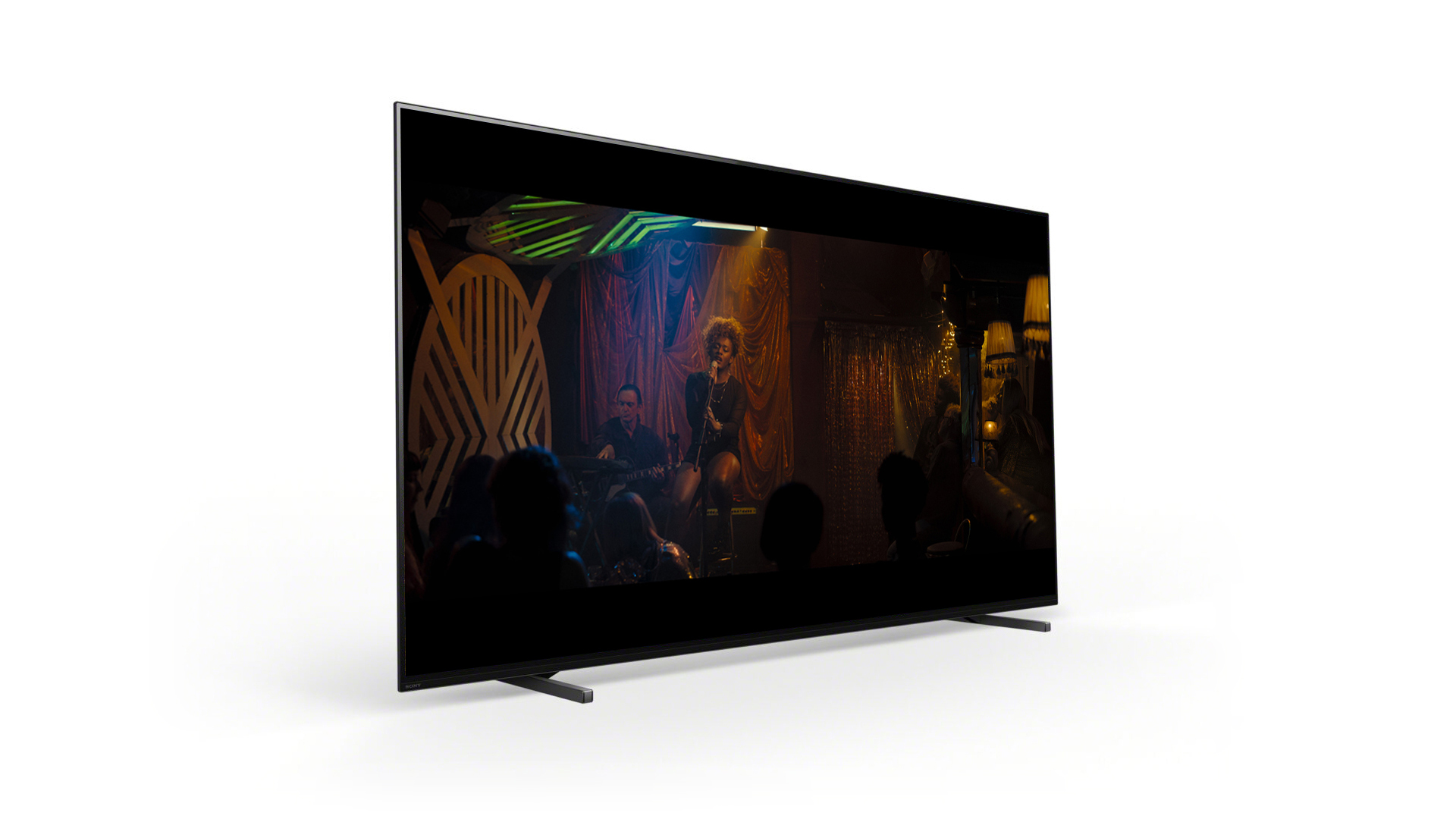
3. Sony XR-55A80J
Sony's step-down OLED might just be the TV of the year
Specifications
Screen size: 55in (also available in 65in, 83in)
Type: OLED
Backlight: not applicable
Resolution: 4K
HDR formats supported: HDR10, HLG, Dolby Vision
Operating system: Google TV
HDMI inputs: 4
ARC/eARC: eARC
Optical output: Yes
Dimensions (hwd, without stand): 71 x 123 x 5.3cm
Reasons to buy
+Super-sharp and detailed +Punchy and vibrant but natural +Superb motion handling
Reasons to avoid
-Incomplete HDMI 2.1 feature set -Missing UK catch-up apps
We rate products on a performance-per-pound basis. That's always been theWhat Hi-Fi? way. We're not looking simply for the absolute best product in each category, as that would invariably involve recommending one of the most expensive products in each category; we're looking for the best bang for your buck. The product that best balances performance, features and price.
That isn't to say that we're averse to recommending a premium product when it justifies its high price, and that's why we were delighted to bestow the full five stars upon Sony's A90J flagship OLED when we reviewed it a little earlier in the year. Simply put, it's the best TV we've seen so far this year, and we suspect that might well still be the case when we're all singingAuld Lang Syne on 31st December.
It's not be the best performance-per-pound TV of 2021, though, because this A80J beats it on that metric. This step-down model in Sony's new OLED range certainly isn't quite as good as its flagship sibling but, by offering most of what makes the A90J great at a much more competitive price, it's turned out to be one of the very best TVs of 2021.
Read more
We knew that the A80J had the potential to be a very good TV, thanks to its shared DNA with the awesome A90J, but we had expected the gap in performance to be fairly big, given the huge gap in price.
That simply isn't the case. It might not be quite as bright and punchy as its flagship sibling, but it's not far off, and that means it's still capable of producing more impactful highlights than rivals such as the LG C1. It's just as sharp and detailed as the A90J, too, which makes it an incredibly crisp and three-dimensional performer. What's most impressive is how the A80J combines the spectacular with the natural and authentic – no other TV in 2021, bar its flagship sibling, delivers on creative intent as faithfully.
The A80J has a 30W Acoustic Surface Audio+ sound system, which uses actuators to vibrate the screen in order to create sound. It means the audio is tied to visuals in a way that TVs from other manufacturers can't match. The sound is also weightier and more spacious than that produced by similarly priced rivals, and there's impressive punch and dynamic range on offer, too.
A lack of Variable Refresh Rate and fairly patchy implementation of 4K@120Hz means hardcore gamers will still be better served by the LG C1 or Philips OLED806, but if your priorities are movies and TV shows, the A80J is a marvellous choice.
We've tested the A80J in its 55-inch size. It's also available as a 65-inch and 77-inch model. We've not yet reviewed it at those bigger sizes but you'll find the latest, lowest prices available for each version below.
In the UK, there's also a variant of the A80J called the A84J. This version has a microphone integrated into its bezel for completely hands-free voice-control (the A80J has only a remote-mounted mic), plus a feature called Rich Colour Enhancer, which adds a tiny bit of extra richness to colours. Otherwise, the sets are identical and equally brilliant.
Read the full Sony XR-55A80J review
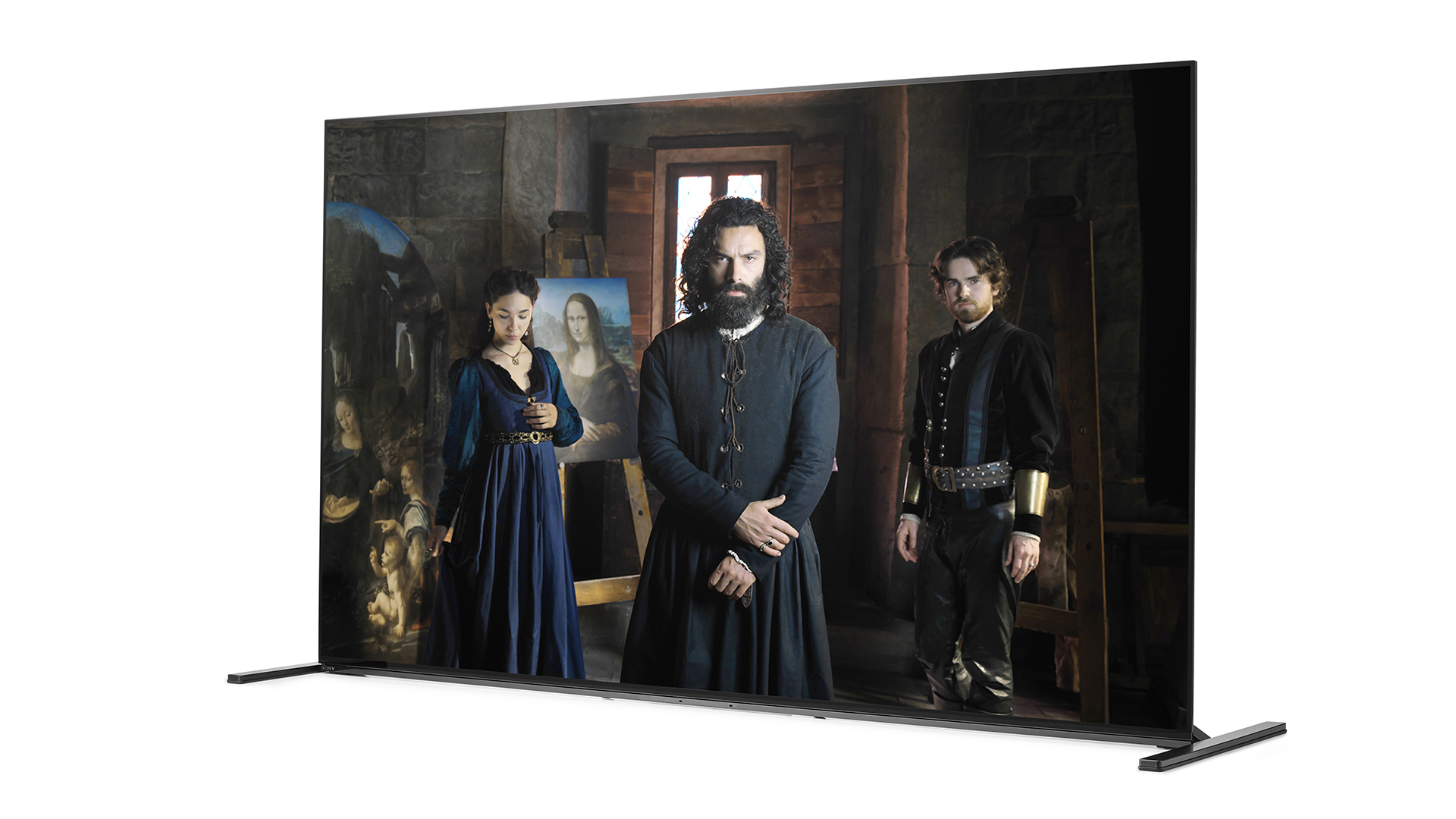
4. Sony XR-55A90J
It's very expensive, but if you want the best, the A90J is it
Specifications
Screen size: 55in (also available in 65in, 83in)
Type: OLED
Backlight: not applicable
Resolution: 4K
HDR formats supported: HDR10, HLG, Dolby Vision
Operating system: Google TV
HDMI inputs: 4
ARC/eARC: eARC
Optical output: Yes
Dimensions (hwd, without stand): 71 x 122 x 4.1cm
Reasons to buy
+Outstanding picture quality +Superb motion handling +Impressive sound
Reasons to avoid
-No VRR (yet), buggy 4K@120Hz -Missing UK catch-up apps -Expensive
While Sony's OLEDs are highly regarded, it's typically hard to justify buying one over a rival LG. Historically, the Sony has a more authentic picture and better sound but is also a step behind on features and usability – and at least a level or two more expensive.
But what if Sony could produce a TV with most of those previously missing features, a more satisfying user experience, and a unique high-quality movie streaming app, all while raising the picture and sound quality to even greater heights? That's exactly what the company's done with the A90J.
In performance terms, the Sony A90J is an absolute stunner. It takes OLED picture performance to new, thrilling levels while maintaining the authenticity for which Sony is justifiably renowned. It also sounds significantly better than all of the other TVs you might be considering. The new Google TV operating system means the user experience is better than that of any pre-2021 Sony TV, too, and the exclusive Bravia Core streaming service is a genuine value-added feature.
Hardcore gamers might want to take a wait-and-see approach, though, as the set doesn't yet support VRR (an update has been promised but not dated) and we found the 4K@120Hz support a little buggy. However, if movies and TV shows are your priority and you have a big budget, we haven't tested a better television than the Sony A90J.
Do check out the A80J at the top of this before handing over your money, though, as it offers much of (but not all) the A90J's excellence at a significantly lower price.
We've tested the A90J in its 55-inch and 65-inch sizes. It's also available as an 83-inch model, which we've not yet reviewed. You'll see the latest, lowest prices available for each version below.
Read the full Sony XR-55A90J review
Read the full Sony XR-65A90J review
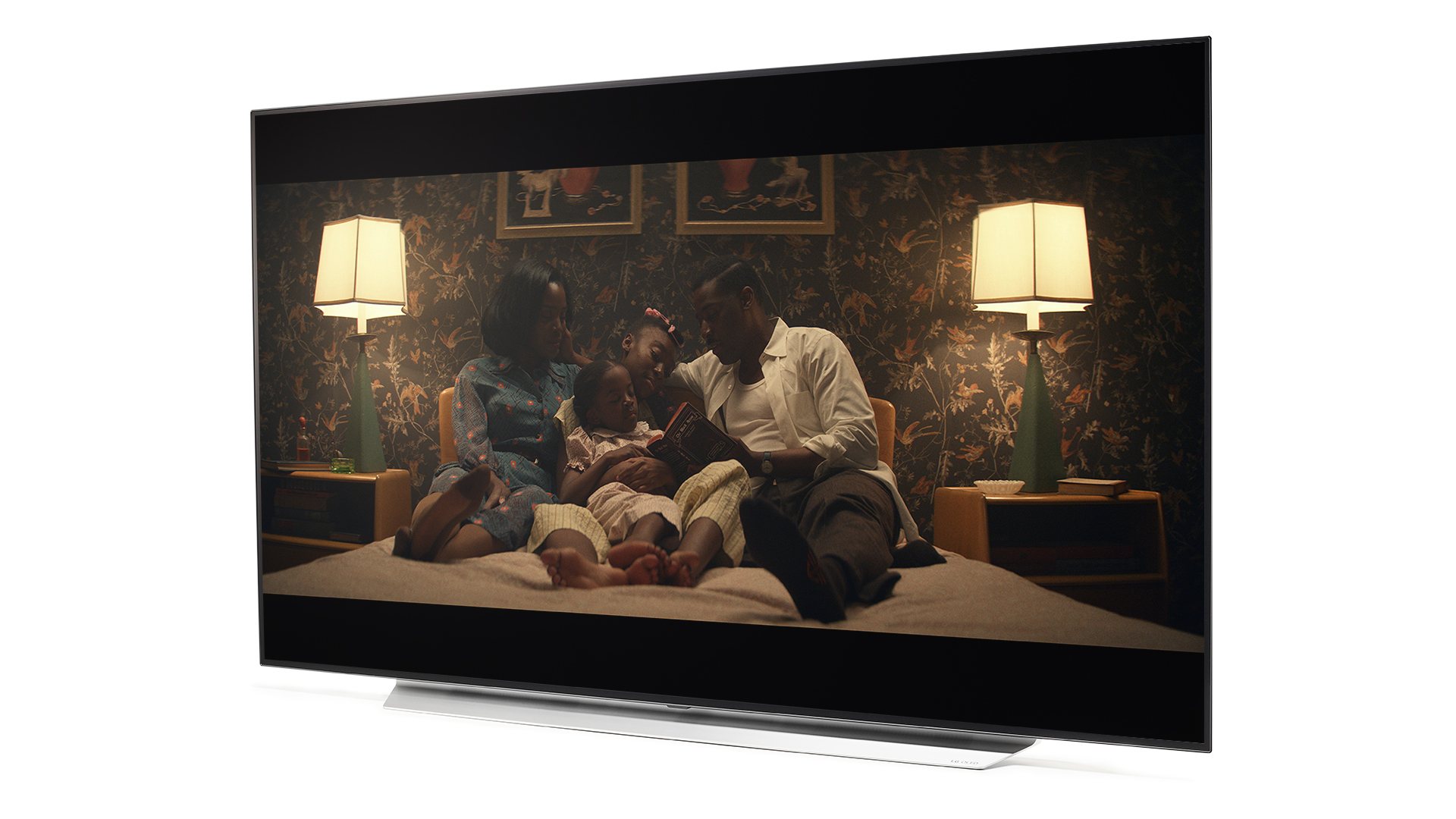
5. LG OLED65C1
The C1 isn't much of a step-up from the CX, but it didn't need to be – this is a superb TV at a competitive price
Specifications
Screen size: 65in (also available in 48in, 55in, 77in, 83in)
Type: OLED
Backlight: not applicable
Resolution: 4K
HDR formats supported: HDR10, HLG, Dolby Vision
Operating system: webOS 6.0
HDMI inputs: 4
ARC/eARC: eARC
Optical output: Yes
Dimensions (hwd, without stand): 83 x 145 x 4.7cm
Reasons to buy
+Superb all-round picture quality +Near-flawless feature set +Better remote and menu system
Reasons to avoid
-Marginal gains on last year's CX -Unengaging audio
LG's C-series model has been the go-to pick of its OLED range for several years. It has always been the most affordable model with the company's best panel and picture processing wizardry. Spending more would get you a fancier design and potentially better sound, but the picture would be no different.
That's not the case in 2021. LG has introduced a new, brighter and sharper 'OLED Evo' panel, and the C1 doesn't have it.
With so much of the focus on the upgraded G1, it's perhaps predictable that the C1 isn't much of an improvement on its predecessor, but there wasn't much that needed improving. The picture performance and feature set were already exemplary, and LG has slightly improved the former with its new Cinematic Movement motion processing and enhanced de-contouring feature (which reduces banding), and slightly improved the latter with a better menu system and a more complete app selection (all UK catch-up apps are present).
The G1's picture is undeniably better in terms of brightness, sharpness and detail, but we're not talking huge margins and most people will struggle to justify the extra £500 ($500), particularly when the niche design and weaker sound are taken into account.
Ultimately, in performance-per-pound terms, the C1 is the better buy. In fact, it's one of the most recommendable TVs available right now.
We've now tested the C1 in its 65-inch and 48-inch sizes, and both are brilliant. It's also available as a 55-inch, 77-inch and 83-inch model. We've not yet reviewed these versions but you'll see the latest, lowest prices on all versions below.
Read the full LG OLED65C1 review
Read the full LG OLED48C1 review
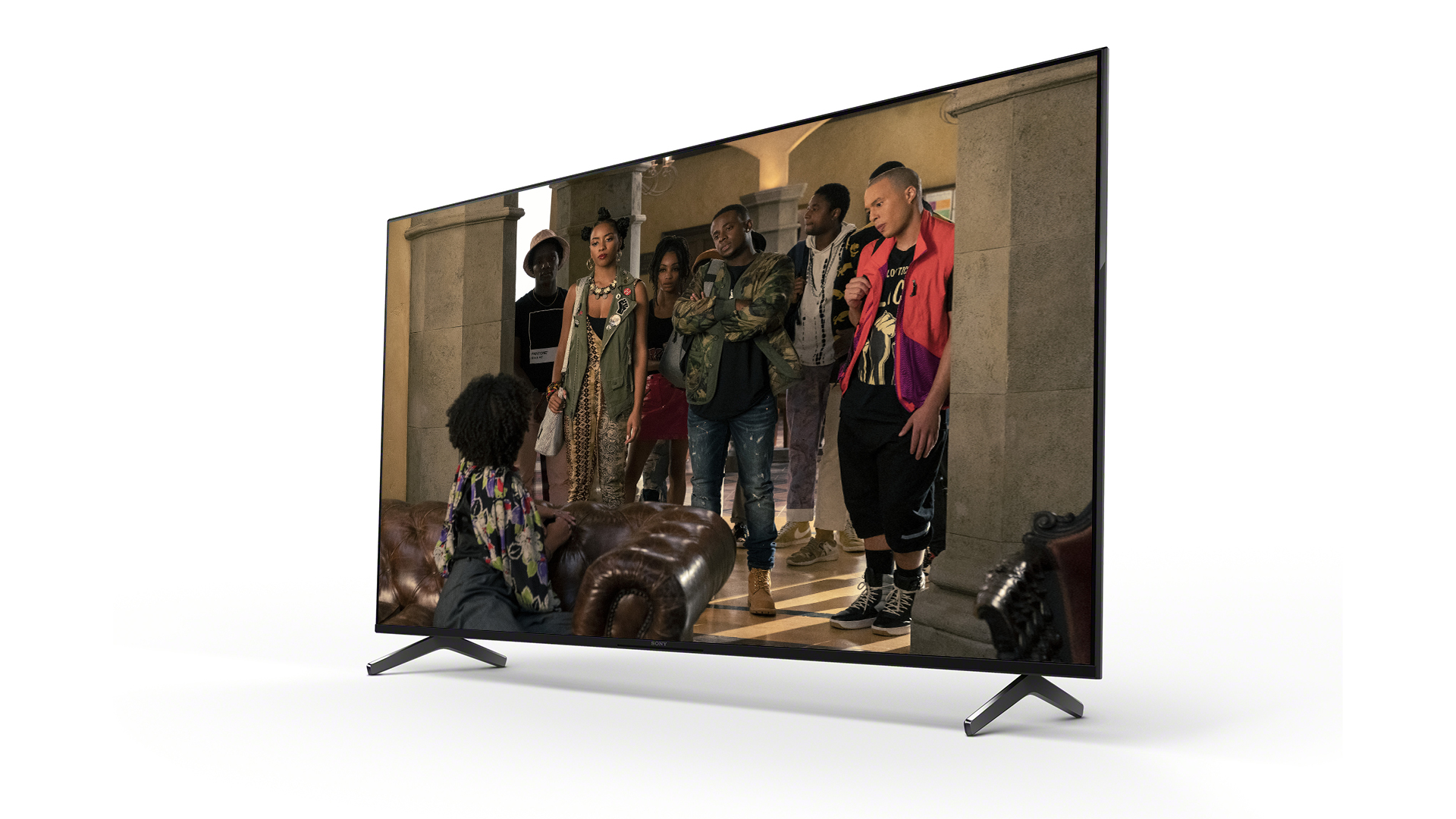
6. Sony XR-65X90J
Simply the best, big, mid-range TV you can currently buy
Specifications
Screen size: 65in (also available in 50in, 55in, 75in)
Type: LCD
Backlight: Direct LED
Resolution: 4K
HDR formats supported: HDR10, HLG, Dolby Vision
Operating system: Google TV
HDMI inputs: 4
ARC/eARC: eARC
Optical output: Yes
Dimensions (hwd, without stand): 33 x 57 x 2.8 inch
Reasons to buy
+Lovely, authentic colour balance +Superb motion handling +Solid feature set
Reasons to avoid
-Limited blacks and viewing angles -Fairly rough standard-def -Missing UK catch-up apps
There's no substitute for size when it comes to home cinema. After all, the whole goal of 'home cinema' is to, you know, bring the cinema home. And what's the most important part of the cinema experience? The whopping huge screen, of course. That's why a 65-inch TV (or even bigger!) is what you should aim for if you're looking to add some serious cinematic scale to your living room.
But we can't all afford to go big and go super-premium. Your budget might stretch to a 65-inch TV, but perhaps not a 65-inch OLED or flagship QLED. If that's the case, the Sony XR-65X90J (or near-identical XR-65X94J) could be just what you're looking for thanks to its heady mix of fancy features, perfectly-pitched picture performance and a mid-range price tag.
Those features include two HDMI 2.1 sockets that support 4K@120Hz (but not VRR... yet) and the new Google TV operating system. The picture is brilliantly natural, authentic and balanced, and the sound is clear and direct too.
While you could buy a 55-inch OLED for around £1500, it's perfectly reasonable to instead choose to go for a TV that's a little less premium but a full 10 inches bigger. If that's the choice you make, the X90J (or X94J) absolutely demands your attention.
If you want a bigger or smaller TV, the X90J is also available in 50-inch, 55-inch and 75-inch sizes. We've not yet reviewed those versions but below you'll find the latest, lowest prices for each size.
Read the full Sony XR-65X90J review
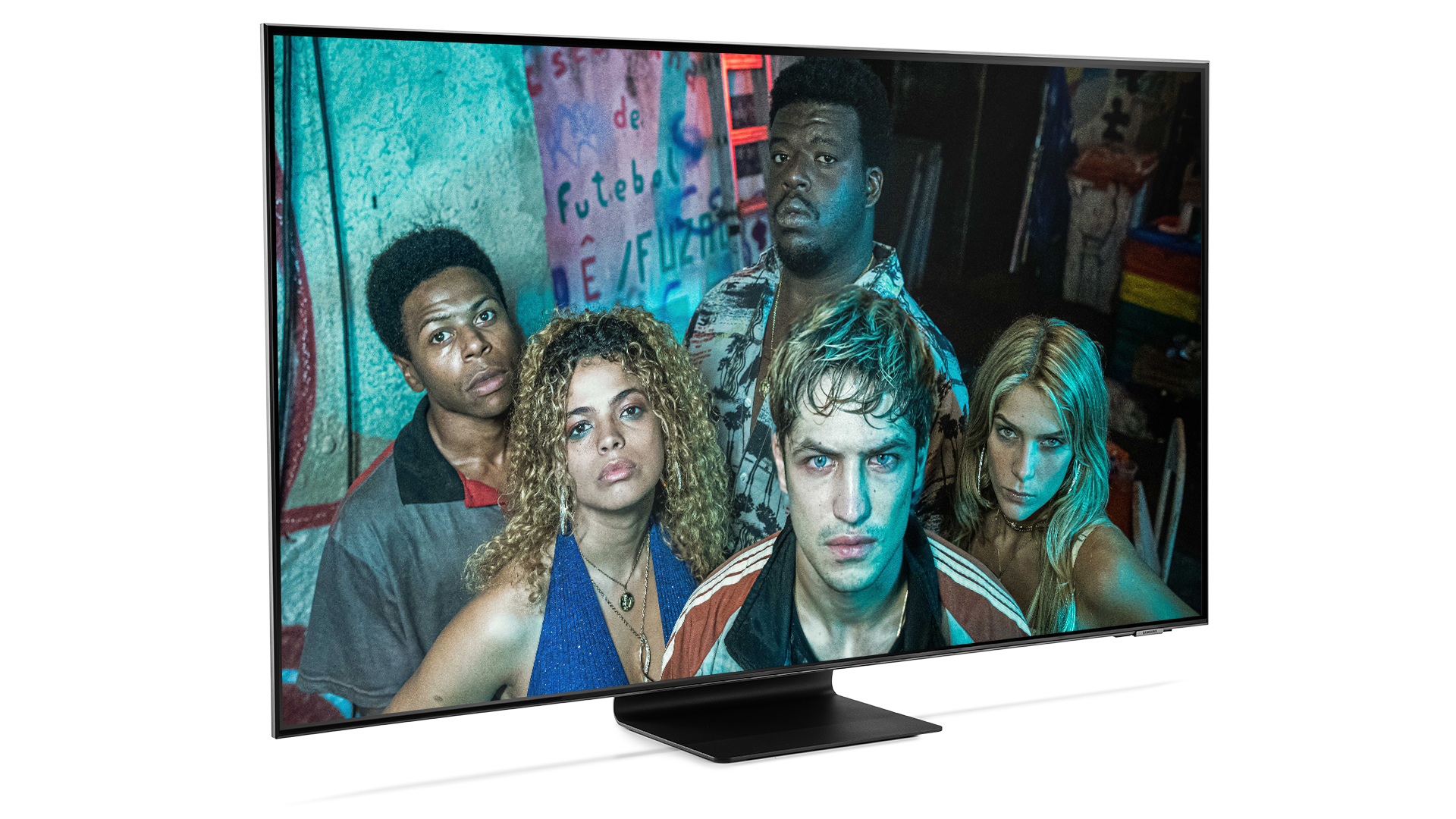
7. Samsung QE55QN94A
Top Neo QLED performance with a cheeky little discount
Specifications
Screen size: 55in (also available in 50in, 65in, 75in, 85in)
Type: QLED
Backlight: Mini LED
Resolution: 4K
HDR formats supported: HLG, HDR10, HDR10+
Operating system: Tizen
HDMI inputs: 4
ARC/eARC: eARC
Optical output: Yes
Dimensions (hwd, without stand): 71 x 123 x 2.6cm
Reasons to buy
+Terrifically bright, punchy picture +Superb detail and sharpness +Excellent TV operating system
Reasons to avoid
-Light control not perfect -Good, not great, sound -No Dolby Vision
Samsung's first flush of Neo QLED TVs has been nothing short of revolutionary to date. The extra-fine level of lighting control that mini LED brings has put LCD's high peak brightness to sophisticated use. It's added a care with contrast that's led to a more nuanced on-screen image, with a more solid, three-dimensional depth than ever before. We've every reason to expect the same from the QN94A.
If 'QN94A' seems a bit of an odd number, that's to indicate that there's only a small difference between it and Samsung's top 4K TV for the year, the QN95A (below). The QN94A TV is identical apart from missing out on the One Connect box – a discrete box that houses all of the QN95A's connections, including power.
The difference in price between the QN94A and QN95A isn't huge, but if you're not interested in the One Connect box and are content with just one HDMI 2.1-certified socket, it's worth saving that little bit of money. Picture quality is excellent regardless of which you choose and the sound isn't bad at all. An OLED might look better in some scenes but there's something quite addictive about the brightness of this set. Its super-contrasty and punchy HDR delivery is ever so more-ish.
There's still no Dolby Vision support but you'll be getting so much from HDR10 alone that it will hardly be on your mind. This is a great TV and a terrific buy at this price.
We tested the QN95A in its 65-inch size. It's also available as a 50-inch, 65-inch, 75-inch and 85-inch model. We've not yet reviewed these versions but you'll see the latest, lowest prices below.
Read the full Samsung QE55QN94A review
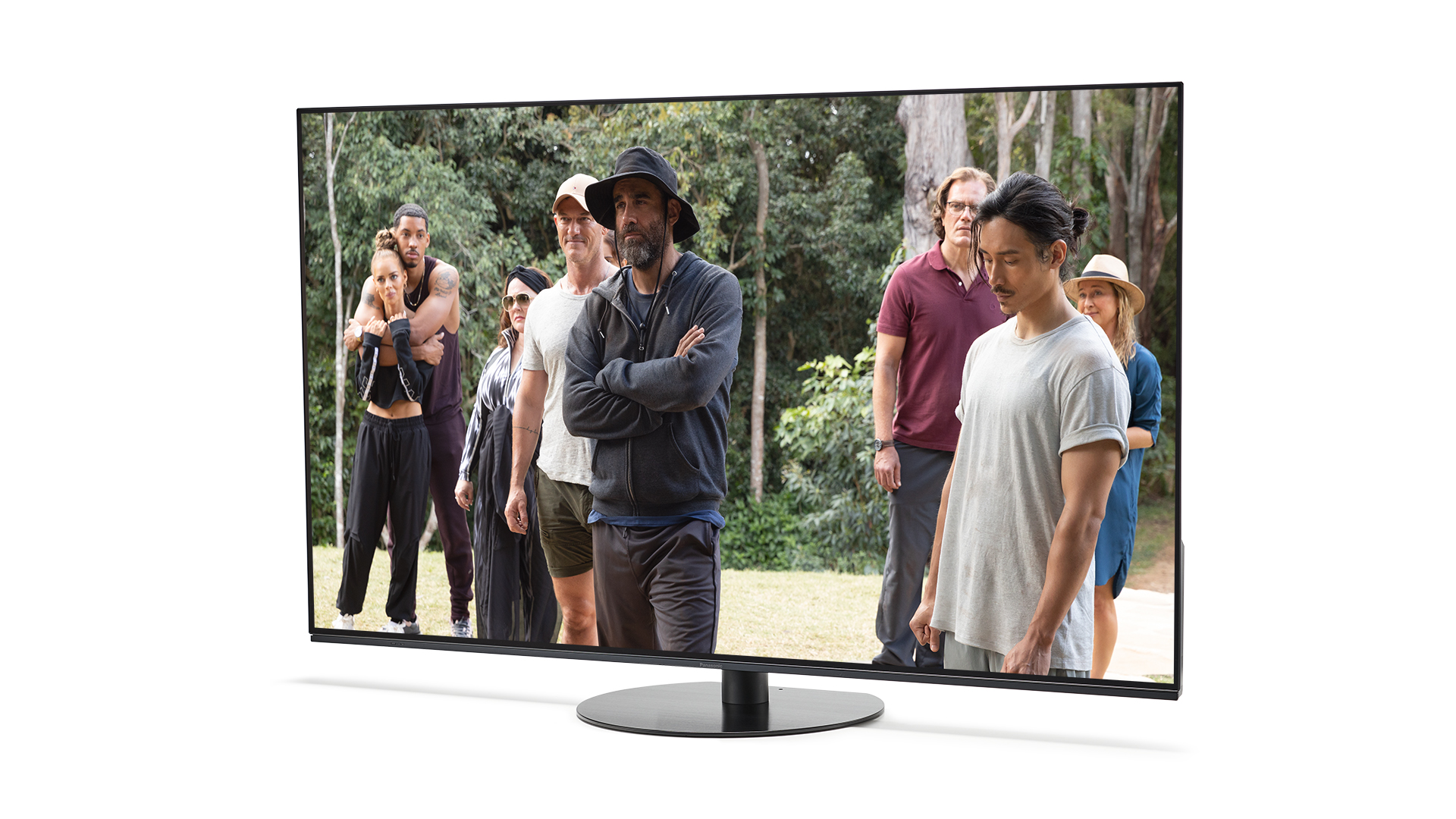
8. Panasonic TX-55JZ1500B
Panasonic's flagship picture is now untethered from its flagship sound
Specifications
Screen size: 55in (also available in 48in, 65in)
Type: OLED
Backlight: not applicable
Resolution: 4K
HDR formats supported: HDR10, HDR10+, HLG, Dolby Vision
Operating system: My Home Screen 6.0
HDMI inputs: 4
ARC/eARC: eARC
Optical output: Yes
Dimensions (hwd, without stand): 71 x 123 x 6.9cm
Reasons to buy
+Beautifully rich but natural picture +Excellent detail and definition +Weighty sound
Reasons to avoid
-Occasional lack of sonic clarity -Missing some big apps -Expensive
Panasonic has embraced the OLED era in a wholehearted, star-crossed lovers-style, producing some of the best TVs of the last few years. But, for the last couple of those, the company's flagship picture has been tethered to its flagship sound.
Whether you rate that flagship sound or not (we did in 2019 but didn't in 2020), the fact remains that in buying Panasonic's best picture, you're also forced into paying for something that you might not use because you've already got (or are getting) a dedicated sound system.
For 2021, though, Panasonic has changed tack so that its best picture is no longer exclusive to this year's 2000-series models but is also a feature of the 1500-series, seen here in 55-inch, TX-55JZ1500B guise.
The result is an excellent TV that makes Panasonic's top picture performance more affordable than ever before. Its rich but natural colours are a particular highlight, and it's brilliantly detailed and sharp, with excellent motion handling to boot.
It's still an expensive set, though, and the Sony A90J and A80J (both above), which are a good deal pricier and cheaper respectively, should both also be considered before you settle on the JZ1500B. We can well imagine that plenty of people will still choose the Panasonic's beautifully vibrant performance even after seeing the very best that Sony has to offer.
We tested the JZ1500B in its 55-inch size. It's also available as a 48-inch and 65-inch model. We've not yet reviewed those versions but you'll see the latest, lowest prices for them below.
Read the full Panasonic TX-55JZ1500B review
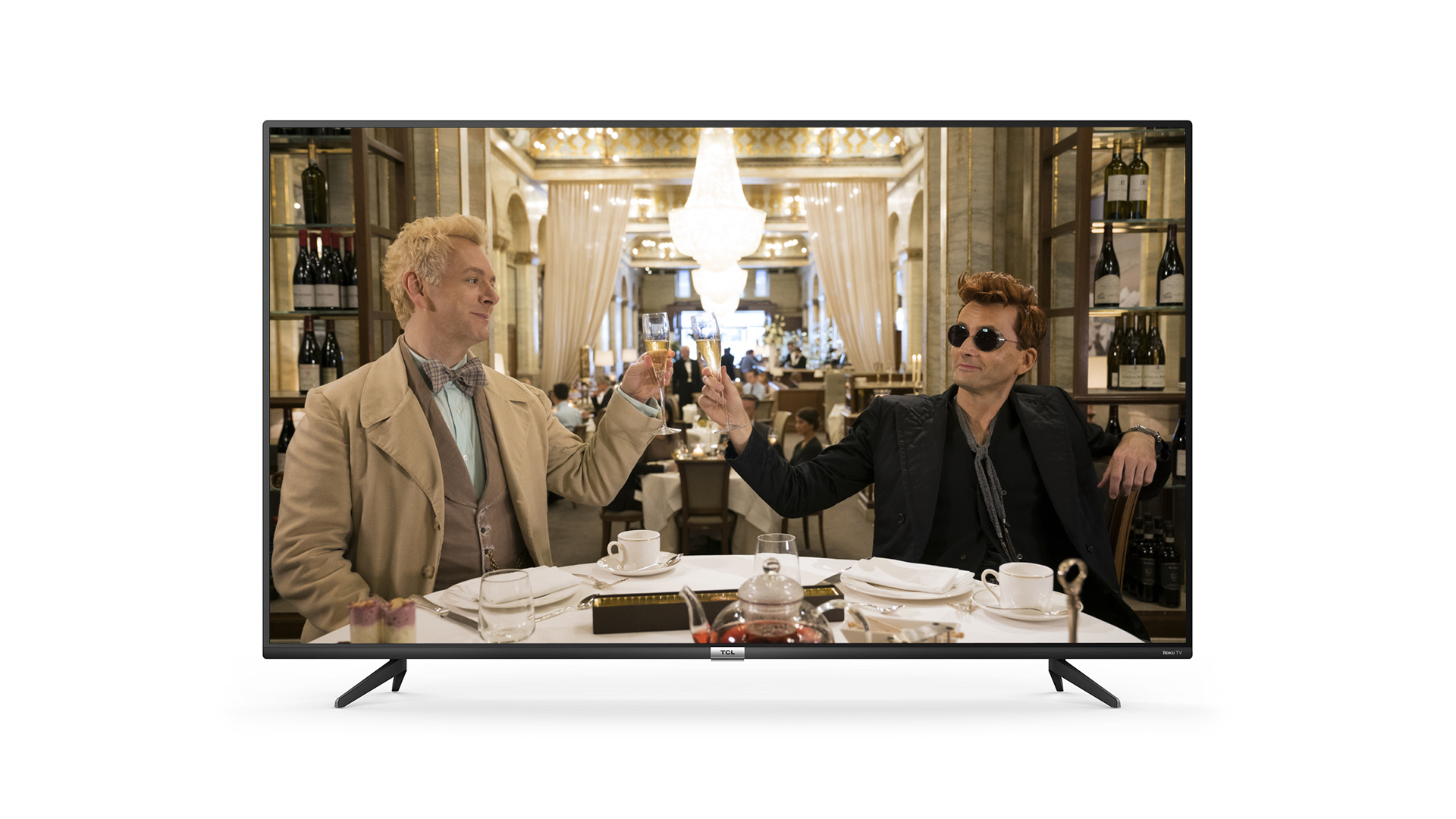
9. TCL 55RP620K
This very affordable Roku TV delivers all the apps and a surprisingly strong performance
Specifications
Screen size: 55in (also available in 43in, 50in, 65in)
Type: LCD
Backlight: LED
Resolution: 4K
HDR formats supported: HDR10, HLG, Dolby Vision
Operating system: Roku
HDMI inputs: 4
ARC/eARC: ARC
Optical output: Yes
Dimensions (hwd, without stand): 72 x 123 x 8.4cm
Reasons to buy
+Complex, natural colours +Good contrast control +Superb smart platform
Reasons to avoid
-Short on dark detail -No motion processing -Sound lacks weight
TCL's Roku TVs have finally arrived in the UK and the TCL 55RP620K is at the tip of the AV spear. It's a 4K HDR TV that sits firmly in the affordable category of TVs, but don't be fooled into expecting something that's feature-light. This is a Roku TV and they're nothing if not smart.
Until now, the only Roku TVs available in the UK have been from Hisense, and they've certainly been good, with two five-star reviews on the bounce. The 55-inch TCL 55RP620K offers something one step closer to mid-range, though, with a greater bit-depth in terms of colour processing and Dolby Vision support too.
It's certainly not the TV equivalent of fine dining, but the RP620K is much better than its low price suggests. For those after an app-happy and exceedingly user-friendly experience, and a good panel size without having to spend too much, this TV from TCL and Roku is a winning combination.
Read the full TCL 55RP620K review
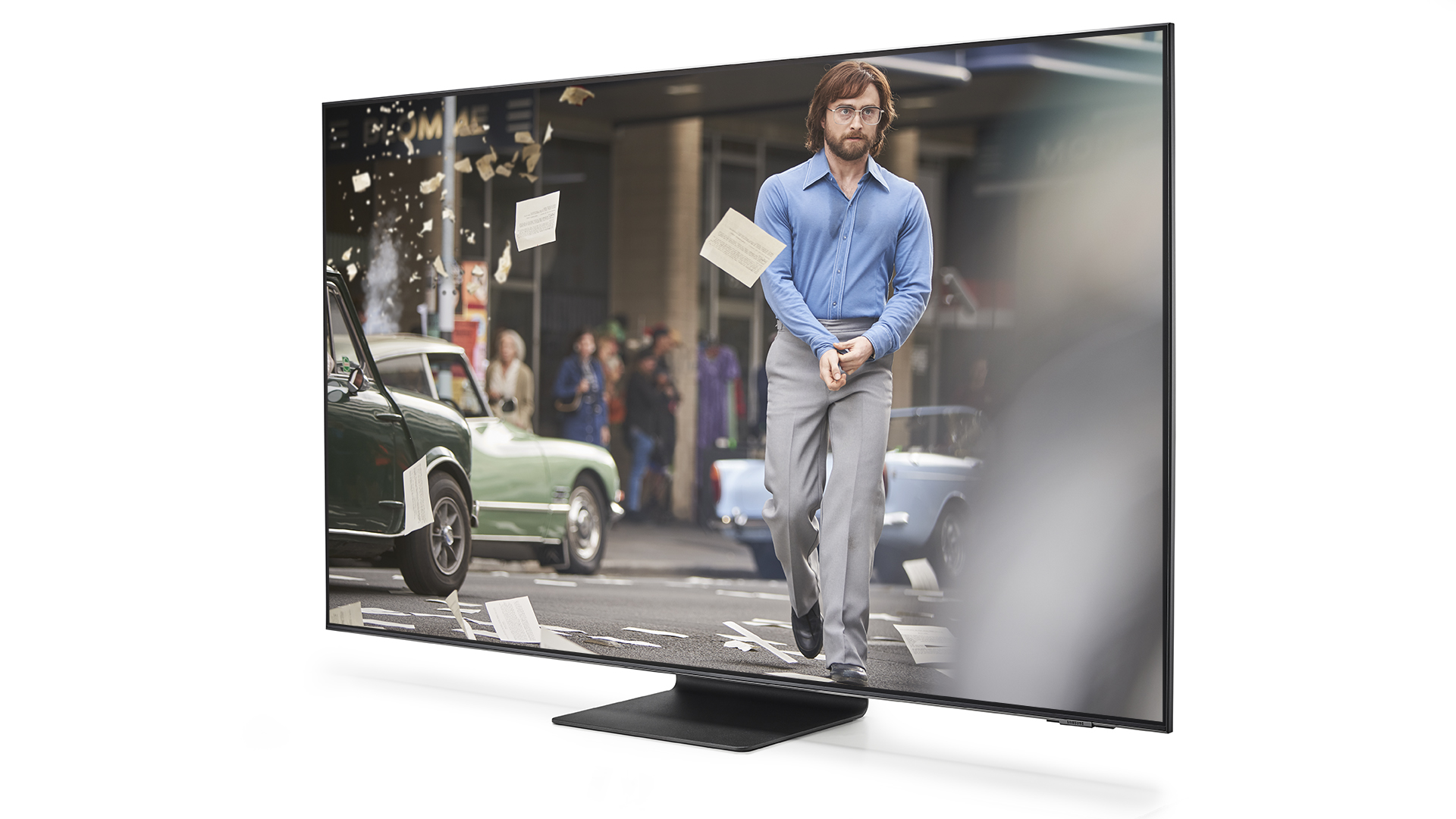
10. Samsung QE65QN95A
The excellent QN94A with One Connect and extra HDMI 2.1 sockets
Specifications
Screen size: 65in (also available in 55in, 75in and 85in)
Type: QLED
Backlight: Mini LED
Resolution: 4K
HDR formats supported: HLG, HDR10, HDR10+
Operating system: Tizen
HDMI inputs: 4
ARC/eARC: eARC
Optical output: Yes
Dimensions (hwd, without stand): 83 x 145 x 2.6cm
Reasons to buy
+Superbly bright, punchy and sharp +Exhaustive feature set +Lovely design
Reasons to avoid
-Artificial boost to dark detail -Reticence with extreme contrast -Still no Dolby Vision
This year looks very much like the year of Mini LED. The technology, which sees the traditional LEDs of a TV backlight miniaturised in order to increase contrast, is a feature of the 2021 line-ups of most major TV brands, including LG and Philips.
For those brands, Mini LED TVs sit below their OLED models, but for Samsung, Mini LED is its flagship technology (assuming you discount its eye-wateringly expensive new Micro LED sets).
The company has developed its own Mini LEDs, which it says are even smaller and more efficient than those of its rivals, and combined them with its existing Quantum Dot tech to create a range of premium TVs that it calls Neo QLEDs. The QE65QN95A is the first Neo QLED we've tested and Samsung's flagship 4K set for 2021.
In real-world performance terms, Mini LED might not quite be the revolution that Samsung is pitching it as, but it is still a substantial upgrade to an already excellent range of TVs. The overall contrast offered is staggering, and the QN95A combines near-OLED black levels with awesomely crisp white highlights and fabulously vibrant colours, all while retaining an effortless sense of naturalism.
Throw in the best, most app-packed operating system in the business, a delightfully slim design and a full set of next-gen HDMI sockets and this is (a lack of Dolby Vision support aside) as complete a package as can be imagined. Just remember that the QN94A (above) offers the same performance at a slightly lower price.
We tested the QN95A in its 65-inch size. It's also available as a 55-inch, 75-inch and 85-inch model. We've not yet reviewed these versions but you'll see the latest, lowest prices below.
Read the full Samsung QE65QN95A review
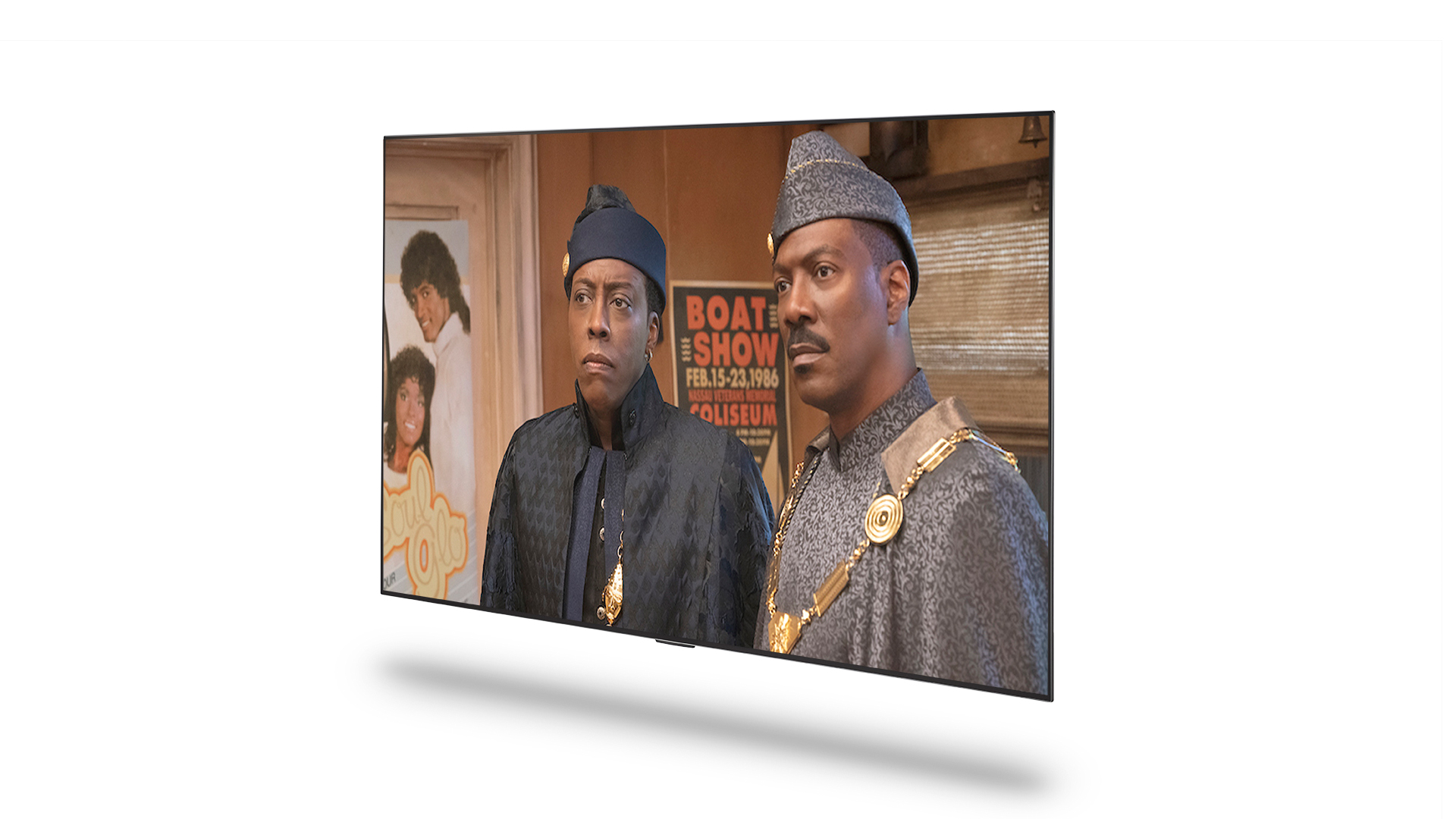
11. LG OLED65G1
LG's new 'OLED Evo' TV is a stunner
Specifications
Screen size: 65in (also available in 55in, 77in)
Type: OLED
Backlight: not applicable
Resolution: 4K
HDR formats supported: HDR10, HLG, Dolby Vision
Operating system: webOS 6.0
HDMI inputs: 4
ARC/eARC: eARC
Optical output: Yes
Dimensions (hwd, without stand): 83 x 145 x 2cm
Reasons to buy
+Brighter, punchier and sharper +Beautiful when wall-mounted +Improved remote and app offering
Reasons to avoid
-No feet or stand in the box -Sound lacks excitement
For the last few years, the C-class model has been the sensible choice of each new LG OLED range. Until now, it has been the most affordable model with the latest panel and picture processing tech: go further up the range and you might get better sound and a fancier design, but you won't get a better visual performance.
For 2021, though, LG has introduced a new 'OLED Evo' panel that promises increased brightness and sharpness, and to get the Evo panel you have to step up to the G1. That's slightly disappointing because you also end up paying extra for a rather niche design (the G1 is designed to be wall-mounted, to the extent that there's no stand or feet in the box) that you may not want.
Still, if the design works for you and you don't mind forking out the extra £500, the G1 is undoubtedly the best OLED that LG has ever produced. It takes the picture performance of last year's GX and CX and improves upon it in almost every way, particularly in terms of brightness, sharpness and detail. That makes it a seriously stunning picture performer. It's also packed with apps and next-gen HDMI features, including 4K@120Hz on all four sockets.
Sound is less strong, but if you were always planning to combine your new TV with a separate sound system and the design works for you (and you've got deep pockets), the G1 should be seriously considered.
We tested the G1 in its 65-inch size. It's also available as a 55-inch and 77-inch model. We've not yet reviewed these versions but you'll see the latest, lowest prices below.
Read the full LG OLED65G1 review
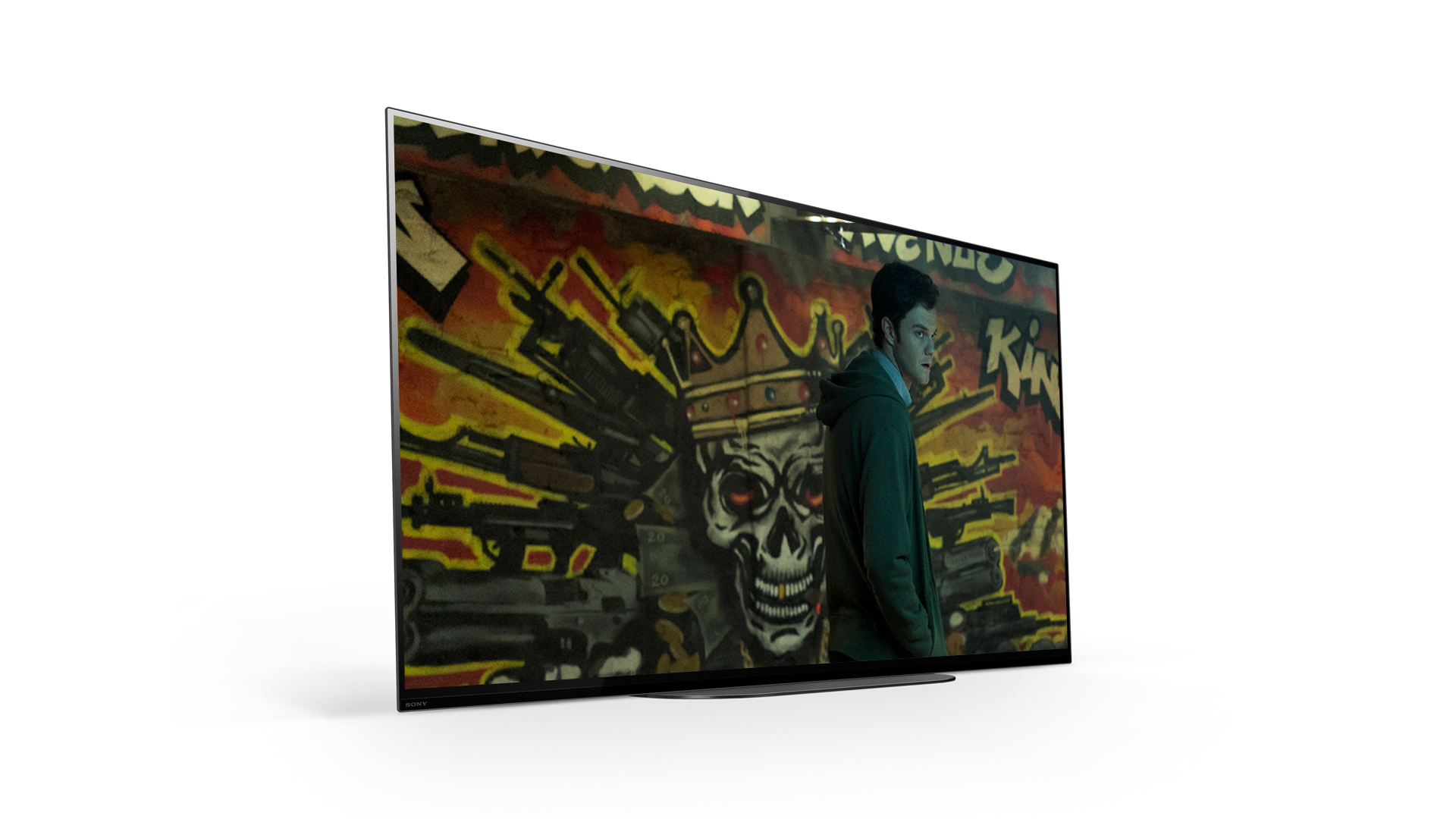
12. Sony KD-48A9
Sony's first 48-inch OLED is extraordinarily good.
Specifications
Screen size: 48in
Type: OLED
Backlight: not applicable
Resolution: 4K
HDR formats supported: HDR10, HLG, Dolby Vision
Operating system: Android TV 9
HDMI inputs: 4
ARC/eARC: eARC
Optical output: Yes
Dimensions (hwd, without stand): 62 x 107 x 5.8cm
Reasons to buy
+Striking picture +Bold sound +Solid app selection
Reasons to avoid
-Expensive -Lacks next-gen HDMI features
It's official: 48 is the new 55. Time was that you couldn't get an OLED TV under 55in, but then LG launched the world's first commercially available 48-inch OLED set. And now Sony has one of its own, too.
Sony has embraced the smaller size, making the TV as petite as possible thanks to its tiny bezels and low profile pedestal stand. It does have a rather large enclosure bolted onto the back (to house the speakers, processing hardware and connections), but you'll only notice if you look at the set side-on.
Disappointingly – and somewhat surprisingly for such a cutting-edge TV – it lacks some next-gen HDMI features such as 4K@120Hz (HFR), VRR (Variable Refresh Rate) and ALLM (Auto Low Latency Mode). Which is bad news for gamers looking to hook up a PS5 or Xbox Series X.
But that's about the only fault we can find with this TV. Sony's X1 Ultimate processor makes images suitably stunning, there's plenty of dark detail on show, and it serves up pretty much every streaming app you could hope for. Motion control is still industry-leading, and in terms of sharpness and detail, there's never been a better TV at this size. If you can stump up the funds, you will not be disappointed.
Read the full Sony KD-48A9 review
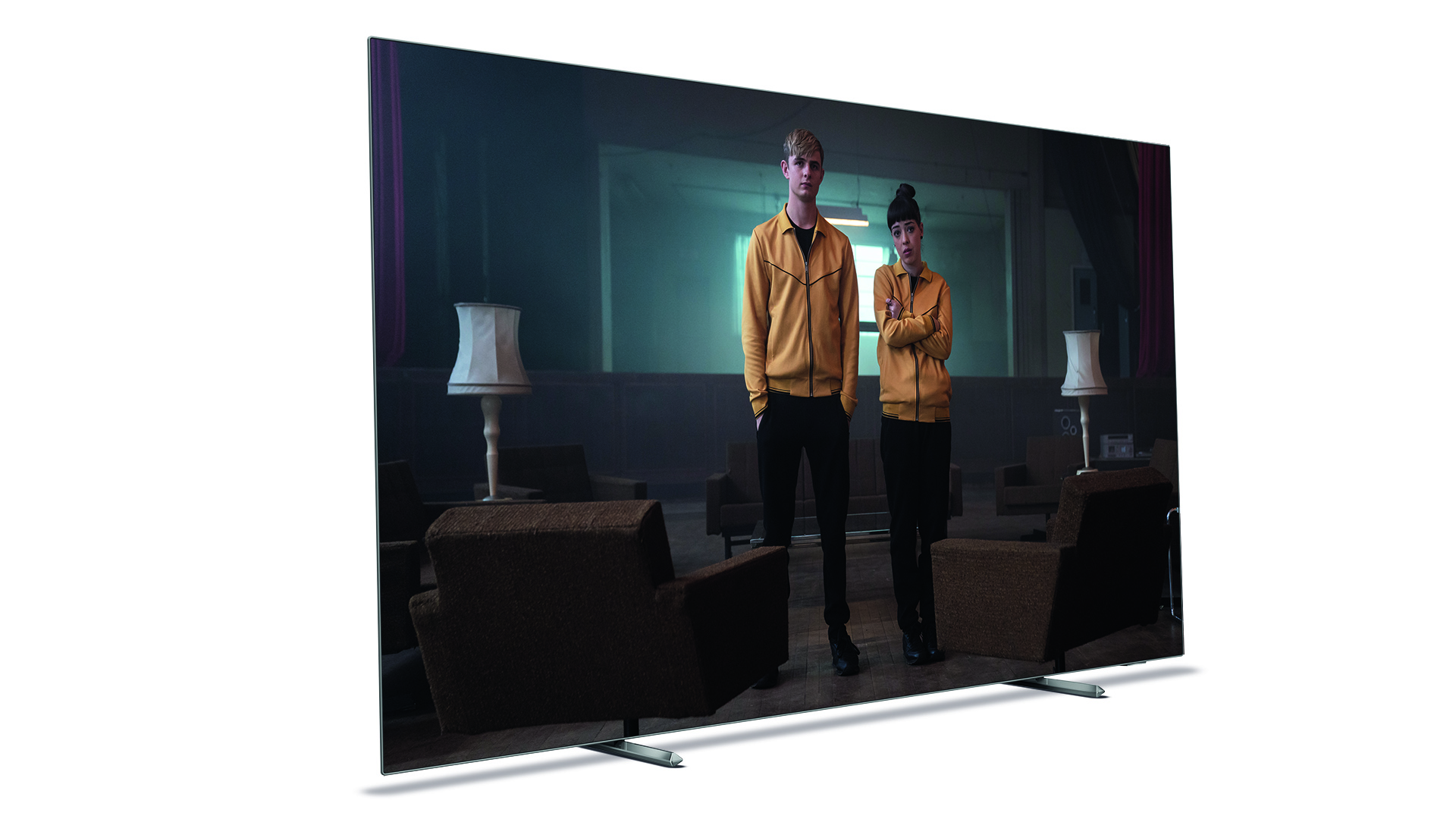
13. Philips 55OLED805
Philips strikes gold with this talented 4K TV.
Specifications
Screen size: 55in (also available in 65in)
Type: OLED
Backlight: not applicable
Resolution: 4K
HDR formats supported: HDR10, HLG, Dolby Vision, HDR10+
Operating system: Android TV 9
HDMI inputs: 4
ARC/eARC: ARC
Optical output: Yes
Dimensions (hwd, without stand): 71 x 123 x 5.8cm
Reasons to buy
+Crisp and detailed picture +Strong sound +Ambilight
Reasons to avoid
-Highlights could be brighter -Not the best choice for gamers
The 55OLED805 is a Philips OLED as it should be; genuinely excellent. If you're prepared to forego the odd next-gen feature, it's the best performance-per-pound OLED you can currently buy.
It produces stunningly crisp and detailed pictures from all sources, delivers far more accomplished audio than most rivals, adds awesome Ambilight (which extends the onscreen action onto the wall around the TV in the form of coloured light) to the mix, and has a lower price tag than its LG, Sony, Panasonic and Samsung equivalents.
Gamers may be put off by the lack of next-gen HDMI features such as VRR and 4K@120HZ (HDMI eARC is missing too), but for everyone else, the 55OLED805 represents an excellent purchase.
If you're in the market for a bigger TV, there's also a 65-inch version available (the 65OLED805) and it's just as good.
Read the full Philips 55OLED805 review
Read the full Philips 65OLED805 review
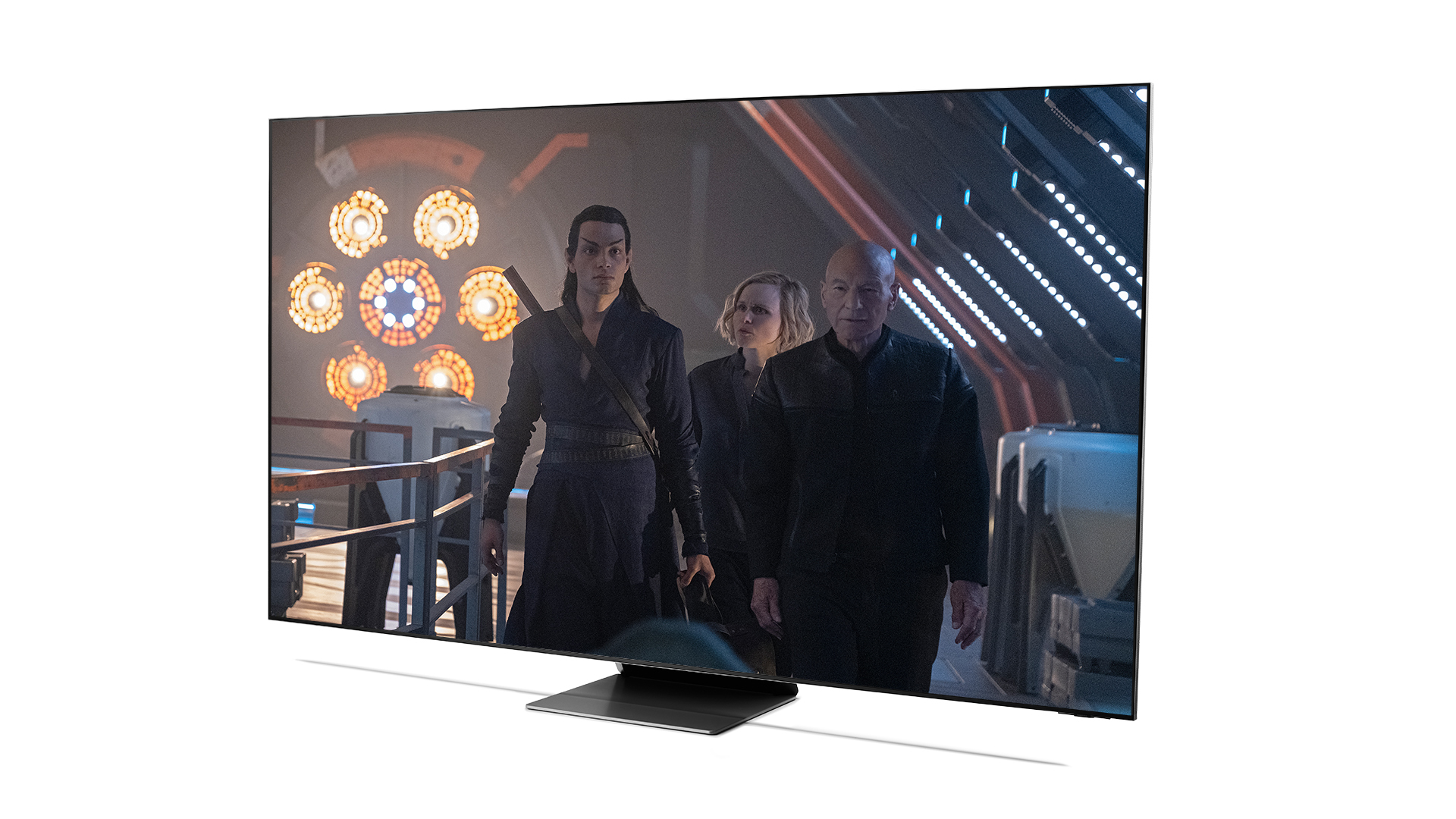
14. Samsung QE75QN900A
Samsung's latest set marks a coming of age for 8K TV
Specifications
Screen size: 75in (also available in 65in, 85in)
Type: QLED
Backlight: Mini LED
Resolution: 8K
HDR formats supported: HLG, HDR10, HDR10+
Operating system: Tizen
HDMI inputs: 4
ARC/eARC: eARC
Optical output: Yes
Dimensions (hwd, without stand): 95 x 165 x 1.5cm
Reasons to buy
+Beautiful, super-slim design +Feature-rich and smart +Incredibly crisp and punchy
Reasons to avoid
-No Dolby Vision
Chocolate and peanut butter, beer and crisps, sleep and Sundays – some things are perfect partners, whether they were designed that way or not. Samsung's 8K boffins might not be the same people as those in charge of Mini LED, but together they have managed to create one serious winning combination in the Samsung QE75QN900A 8K TV.
The Samsung QE75QN900A is a 75-inch version of Samsung's third generation of 8K TVs, but the first to be backed by a Mini LED lighting system. As the name suggests, Mini LEDs are much smaller than standard LEDs, the size of glitter in your hand, and numbering in the thousands, rather than the hundreds, on your TV panel.
In the case of the QN900A, More LEDs means more granular backlight control, and more pixels means crisper definition. Forget native 8K content for now, because there isn't any – focus on the fact that this fabulous TV manages an awesome sense of scale but with the sort of sharpness and detail that we'd normally associate with a smaller 4K set. If you're going really big with your next TV, this is the model to get.
We tested the QN900A in its 75-inch size. It's also available as a 65-inch and 85-inch model. We've not yet reviewed these versions but you'll see the latest, lowest prices below.
Read the full Samsung QE75QN900A review
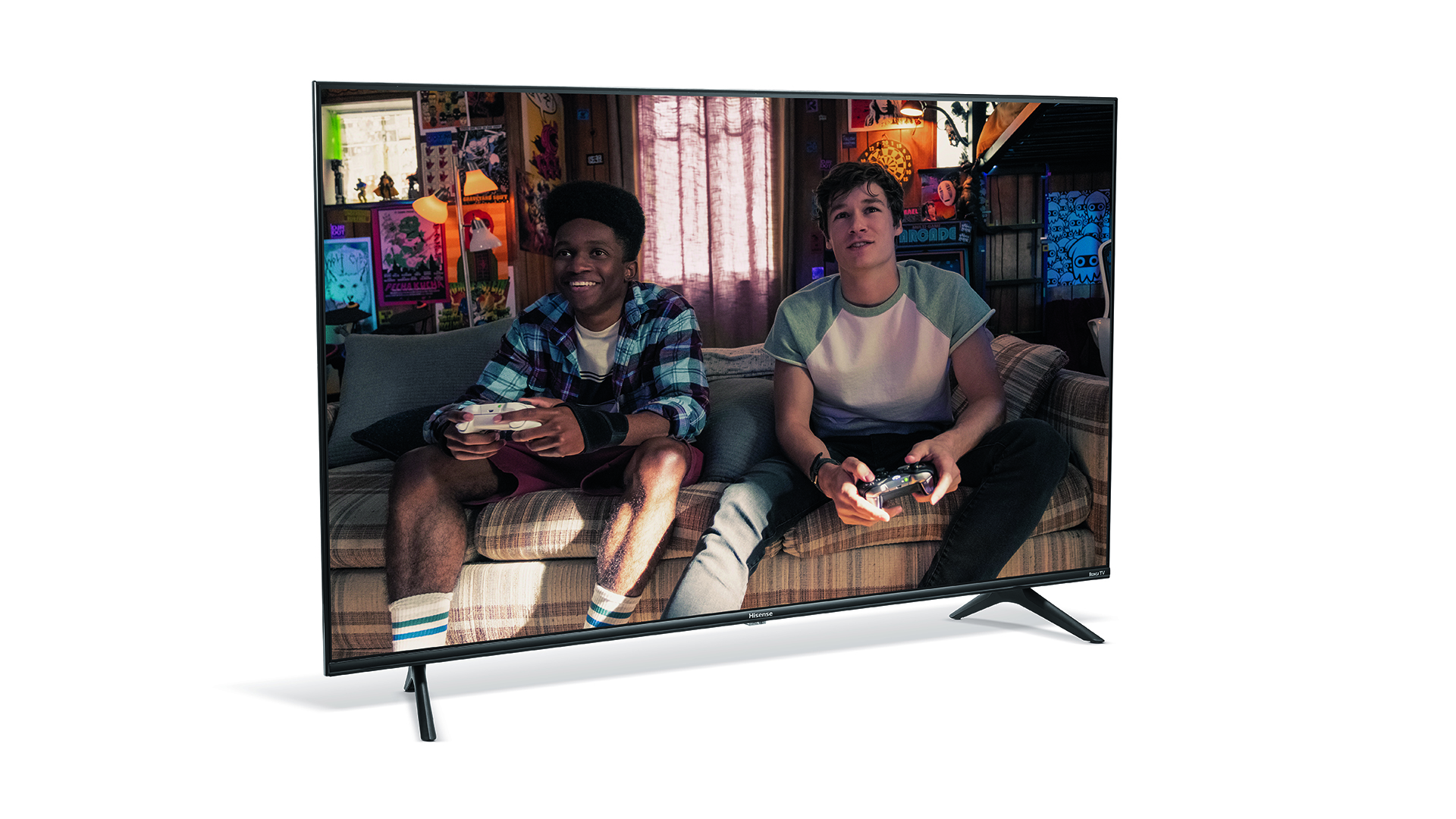
15. Hisense Roku R50A7200GTUK
An impressively complete package at a very low price
Specifications
Screen size: 50in (also available in 43in, 55in, 65in)
Type: LCD
Backlight: Direct LED
Resolution: 4K
Operating system: Roku
HDR support: HDR10, HLG
HDMI inputs: 3
USBs: 1
Optical output: Yes
Dimensions (hwd, without stand): 66 x 113 x 8.6cm
Reasons to buy
+Excellent upscaling +Bold, colourful picture +Superb Roku UI
Reasons to avoid
-Sonically lightweight -Colours can be heavy-handed
The Hisense Roku R50A7200GTUK is likely to be the cheapest 50-inch TV we'll see on sale in the UK this year from a major manufacturer. It promises a good-sized, punchy 4K HDR image and all the major apps and services you could need, without so much as an additional box or stick in sight.
It's a pledge that Hisense delivered so well in 2020 with its R50B7120UK model that it has decided to leave the recipe pretty much as it was for its 2021 Roku TV.
Neither the picture nor the sound are perfect, but both are surprisingly good for the very low asking price. Add in a brilliant feature set and an unbeatable content offering, and you've got a great performance-per-pound proposition.
Read the full Hisense R50A7200GTUK review
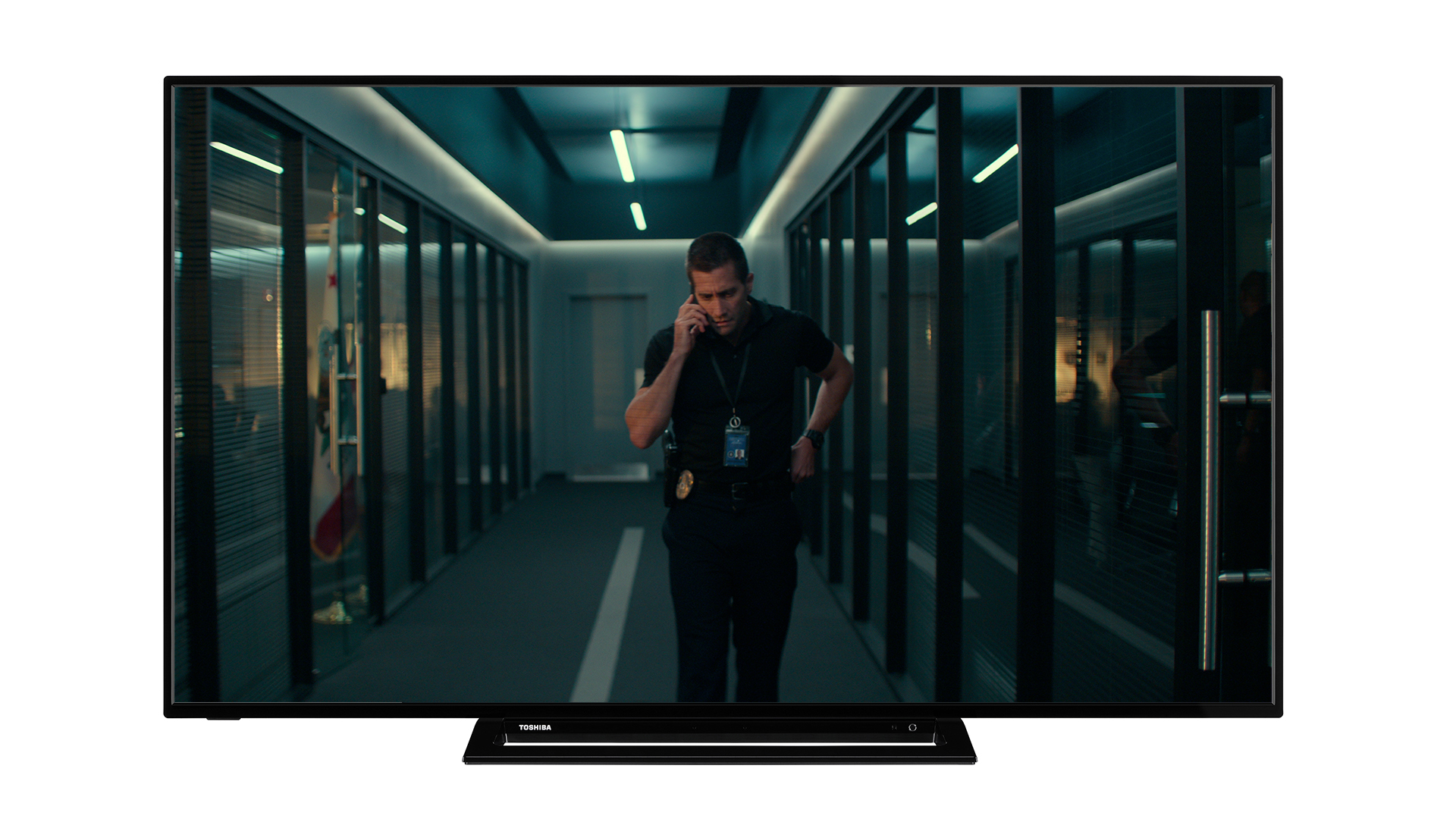
16. Toshiba 50UK3163DB
The boldest 4K HDR picture we've seen from a sub-£500 TV
Specifications
Screen size: 50in (also available in 43in, 58in, 65in)
Type: LCD
Backlight: Direct LED
Resolution: 4K
Operating system: Toshiba
HDR support: HDR10, HLG, Dolby Vision
HDMI inputs: 3
USBs: 1
Optical output: Yes
Dimensions (hwd, without stand): 70 x 113 x 2.5cm
Reasons to buy
+Exceptionally sharp 4K pictures +Superbly punchy HDR +Good smart features
Reasons to avoid
-Black levels aren't the best -Gaming features are limited -No Disney+ or Apple TV apps
We've seen a pretty dizzying mixture of the decent, the bad and the ugly from Toshiba's recent TV efforts.
With this in mind, it was pretty much impossible to predict what we were going to get out of the new 50UK3163DB when it landed on our test benches. Certainly we could never in our wildest dreams have predicted that it was actually going to end up dazzling us with arguably the most aggressively 'next-gen' pictures we've seen from any sub-£500 TV to date.
Inevitably for its money, the Toshiba 50UK3163DB isn't perfect. Black levels are average, its pictures sometimes border on harshness, and its colours sometimes look rather washed out.
Its entirely healthy obsession with trying to give you the maximum 4K and HDR bang for your buck may well win it plenty of fans, though. Especially in shops where it can be shown running side by side with its subtler rivals.
Read the full Toshiba 50UK3163DB review
How to choose a TV
What size TV should you buy?
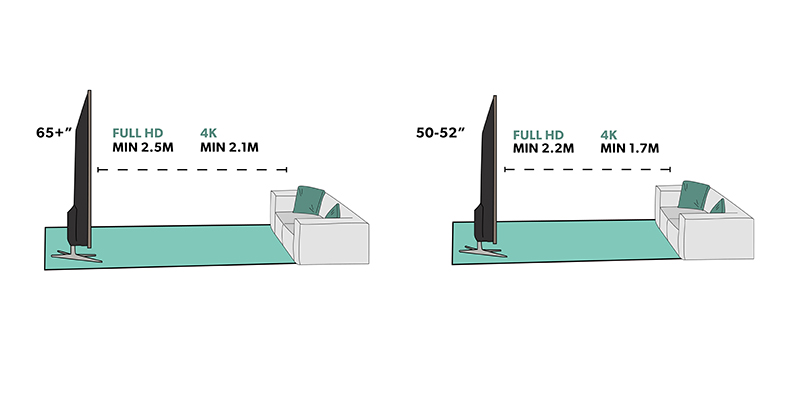
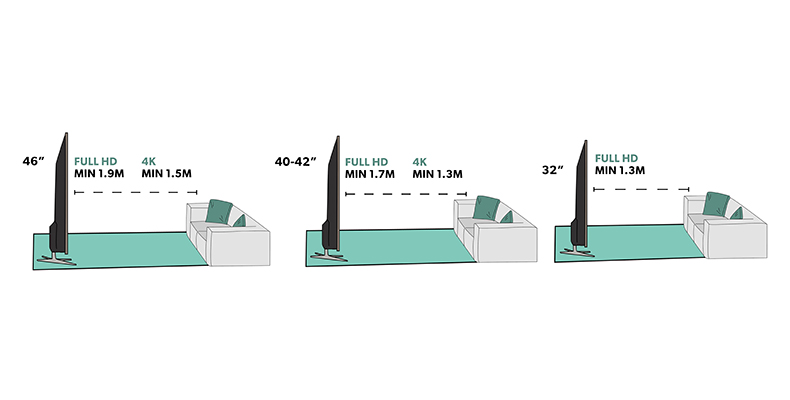
While it might be tempting to think that bigger is better, the size of set that's right for you is closely dependent on how close to the screen you'll be sitting, and the resolution of the source material you're watching.
Luckily, an organisation called SMPTE (which stands for the Society of Motion Picture and Television Engineers) has published detailed guidelines on exactly how far you should sit in order to optimise the performance of your TV.
If you're sitting the correct distance from your TV, you'll see lots of detail, good edge definition and smooth, clean motion, but if you're sitting too close to the screen, then you're going to see more picture noise and artefacts.
On the other hand, sit too far away from the TV and you'll struggle to pick up all the picture detail your TV has to offer.
The following distances are a good place to start:
- 65in - minimum 2.5m (Full HD) or 2.1m (4K)
- 50-52in - minimum 2.2m (Full HD) or 1.7m (4K)
- 46in - minimum 1.9m (Full HD) or 1.5m (4K)
- 40-42in - minimum 1.7m (Full HD) or 1.3m (4K)
- 32in - minimum 1.3m (Full HD)
Should you buy a 4K or Full HD TV?
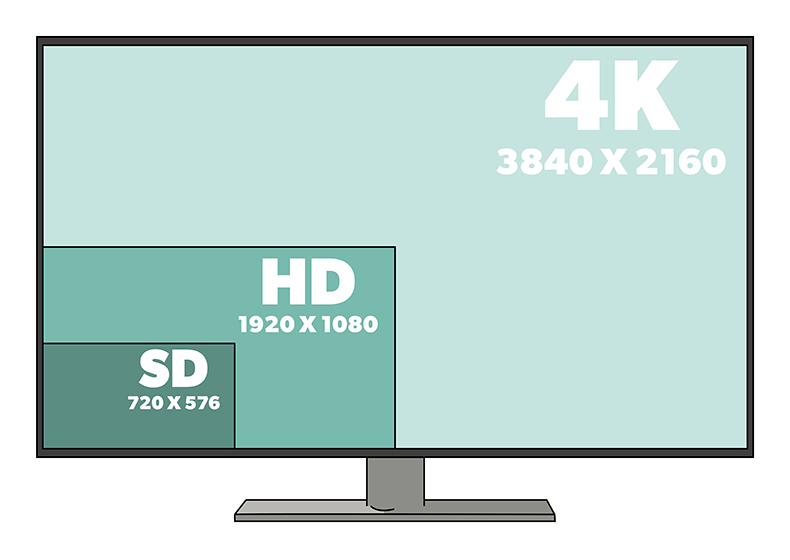
This question is pretty much moot now, as the vast majority of TVs are now 4K. It's actually rather hard to find Full HD (1080p) models, even at relatively small sizes.
If you're buying a TV below 32 inches and can save a lot of money on a Full HD model, by all means go for it (4K won't be a huge benefit at that sort of size anyway), but otherwise 4K is both worthwhile and, in all likelihood, your only option.
What about 8K?
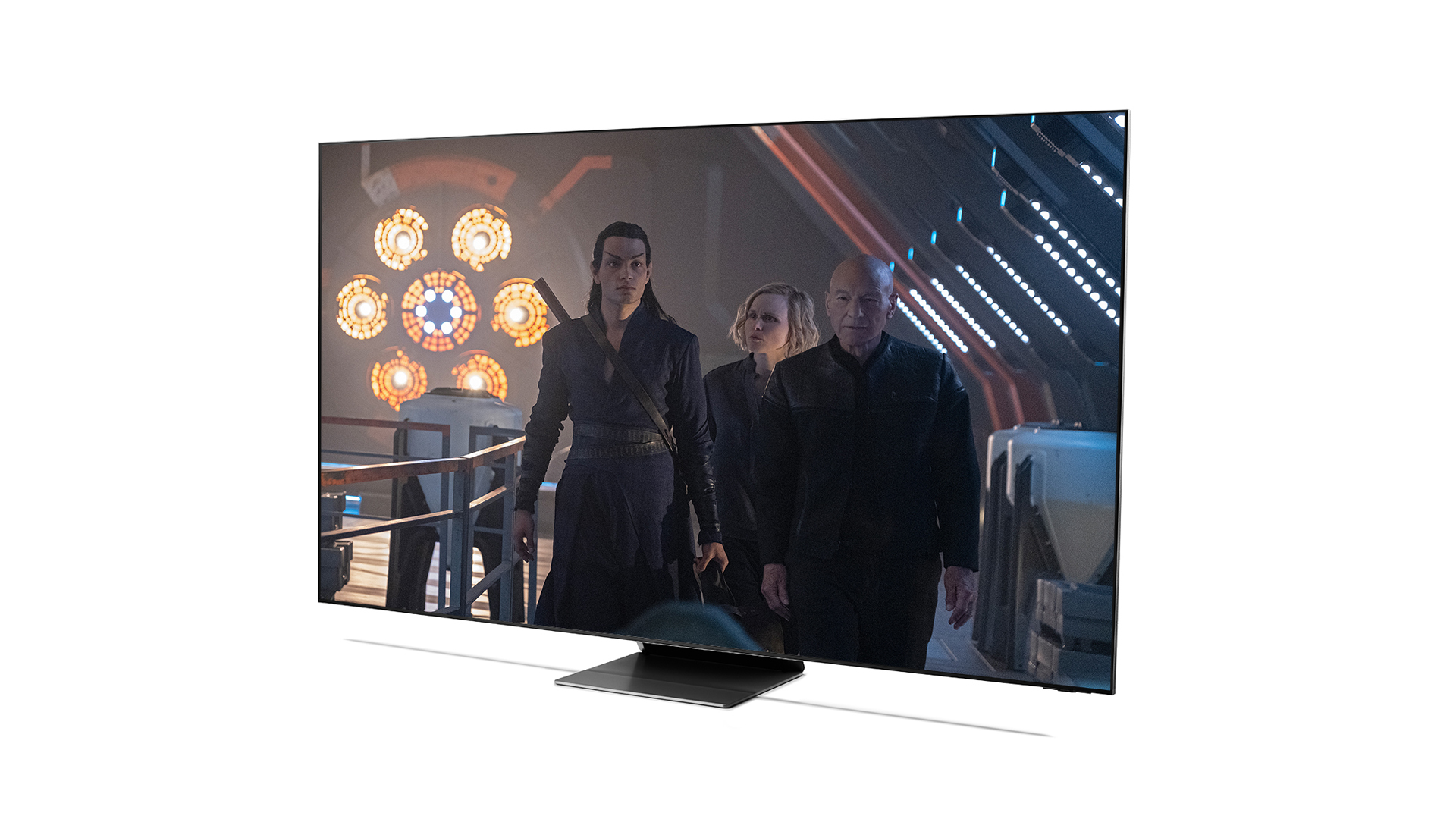
You can now buy 8K TVs from a number of brands, including Samsung, LG and Sony. It's arguably Samsung that has lead the way, and our favourite 8K TV so far is the excellent QE75QN900A.
It's important to note, though, that almost no native 8K content is available. If you buy an 8K TV and want to show of its ridiculously high resolution, you'll have to do so using nature, scenery and space footage from YouTube. At this stage, no streaming services have even hinted at launching 8K content, and it seems unlikely that an 8K disc format will ever materialise.
For those reasons, it's hard to recommend that most people pay the extra for an 8K TV at this stage. That said, if you've got deep pockets and want to be as ready as possible for the potential 8K content of the future, there's no real harm in going for an 8K TV now, particularly as models such as the Samsung QN900A make current 4K content look better than ever.
Should you buy an HDR TV?
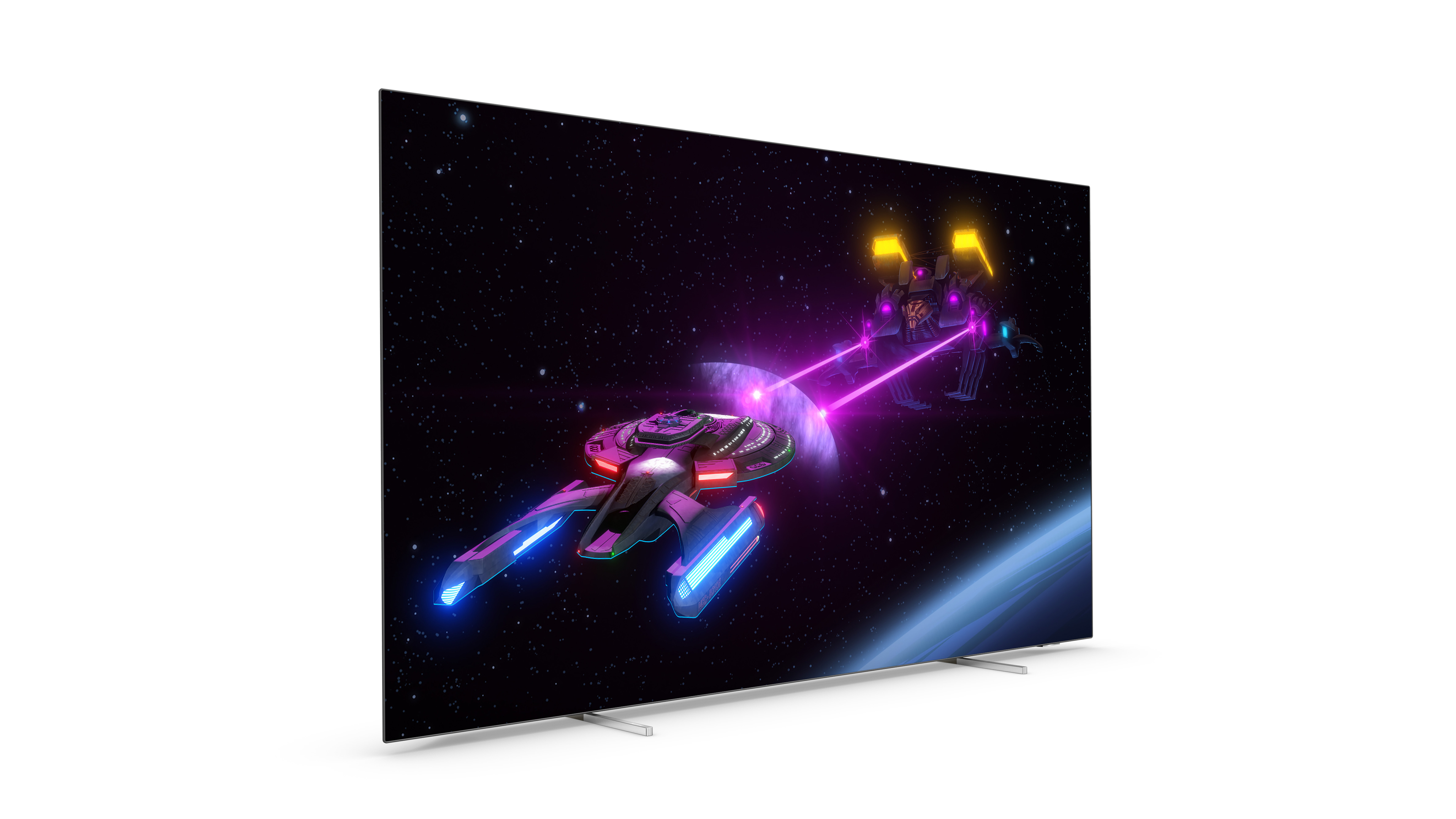
High Dynamic Range is without a doubt a much bigger deal than 8K, and certainly something you should consider before buying your next TV.
Essentially, the higher the dynamic range (brightness and colours), the more lifelike the picture. HDR offers greater subtlety and depth of gradations of colours, plus stronger contrast.
There are various types of HDR out there, and with different TV brands backing different variants, it can be a minefield trying to find the best option. Allow us to explain.
First up is HDR10, which is essentially the core HDR format that every HDR TV should support.
HDR10 is a static HDR format that applies the HDR values on a scene-by-scene basis (i.e. whenever the camera cuts to a new scene). Dolby Vision, on the other hand, applies this image information (called metadata) on a frame-by-frame basis. This dynamic form of HDR, when implemented properly, has the potential to improve upon the standard HDR10 presentation.
HDR10+ is a rival format to Dolby Vision. Created by Samsung, it also uses dynamic metadata but, whereas Dolby Vision is licensed, HDR10+ is a free, open format that any company can deploy as it sees fit.
Of these two 'dynamic' HDR formats, Dolby Vision is by far the most prevalent, both in terms of TVs and content, and if you have to choose between one and the other, that's the one we'd recommend. That said, you can now buy TVs from the likes of Philips and Panasonic that support both Dolby Vision and HDR10+.
Finally in our rundown of HDR formats is HLG (Hybrid Log Gamma), which was developed specifically for broadcasting by the BBC and Japan's NHK. It's used to deliver all of the HDR content offered by the BBC and Sky, so can be considered very important. Luckily, it's now almost as common as standard HDR10 in TV spec lists, so you should have little problem finding a model that supports it.
What inputs and outputs do you need?
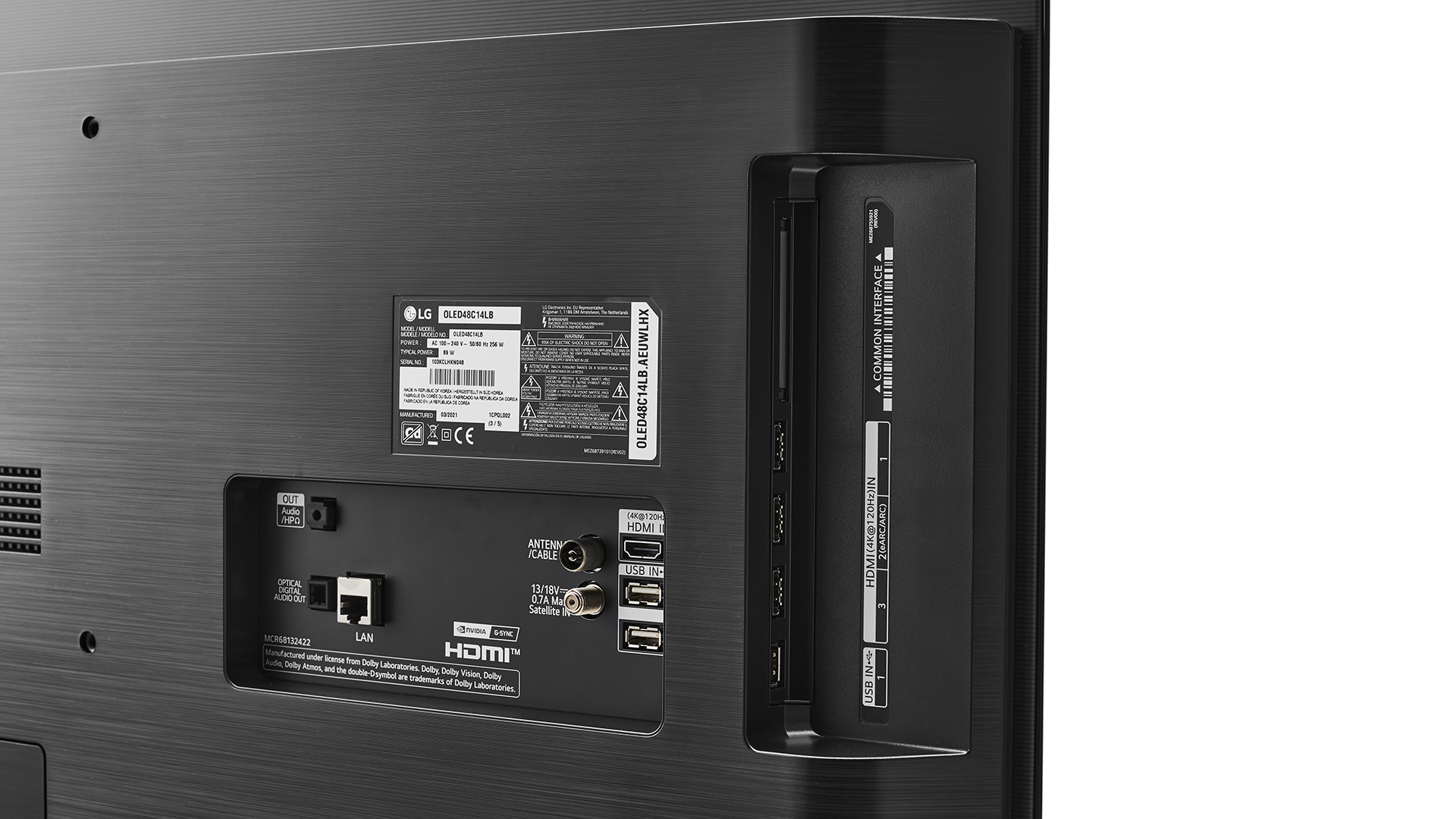
These days, it's all about HDMI, which is used to connect everything from set-top boxes to video streamers, Blu-ray players to games consoles. Thanks to ARC/eARC (Audio Return Channel / Enhanced Audio Return Channel), a single HDMI connection can even be used to output sound to an AV receiver or soundbar at the same time as it receives a video signal.
Currently, three HDMI connections is standard on budget and mid-range TVs, while four is the norm for premium models.
The specification of the HDMI connections tends to differ depending on the price of the TV, too, with premium models now commonly getting at least one or two HDMI 2.1 sockets. These have greater bandwidth than their HDMI 2.0 counterparts and can support advanced formats such as 4K@120Hz and 8K@60Hz. Fancy gaming features such as Auto Low Latency Mode and Variable Refresh Rate are often supported via HDMI 2.1 sockets, too, though not always. It's sensible to check the specs thoroughly if there are particular features you're after.
After HDMIs, USB ports are the most abundant on modern TVs. You can use these to keep devices charged (often particularly useful for stick- or dongle-style streamers), and some TVs allow the connection of flash drives and hard drives for the recording of live TV content.
On the subject of live TV, you can expect practically every TV to have an aerial socket via which it can receive Freeview broadcasts, but many also have a satellite connection. Be warned, though; the presence of a satellite connection doesn't guarantee that there's a Freesat tuner on board. Without one, you'll receive only a patchy and disorganised selection of satellite TV channels.
Other useful connections include optical and stereo outputs, which can be used in lieu of HDMI ARC to connect legacy audio equipment. Headphone outputs are still fairly common, too, though Bluetooth is also supported by most TVs now and Samsung TVs in fact now feature the latter but not the former.
Lastly, while some TVs feature composite inputs (often via an adapter), most – even at the budget end – have phased out legacy connections such as SCART. So those clinging on to old video cassette recorders, for example, should be aware of that.
What about smart features and streaming apps?
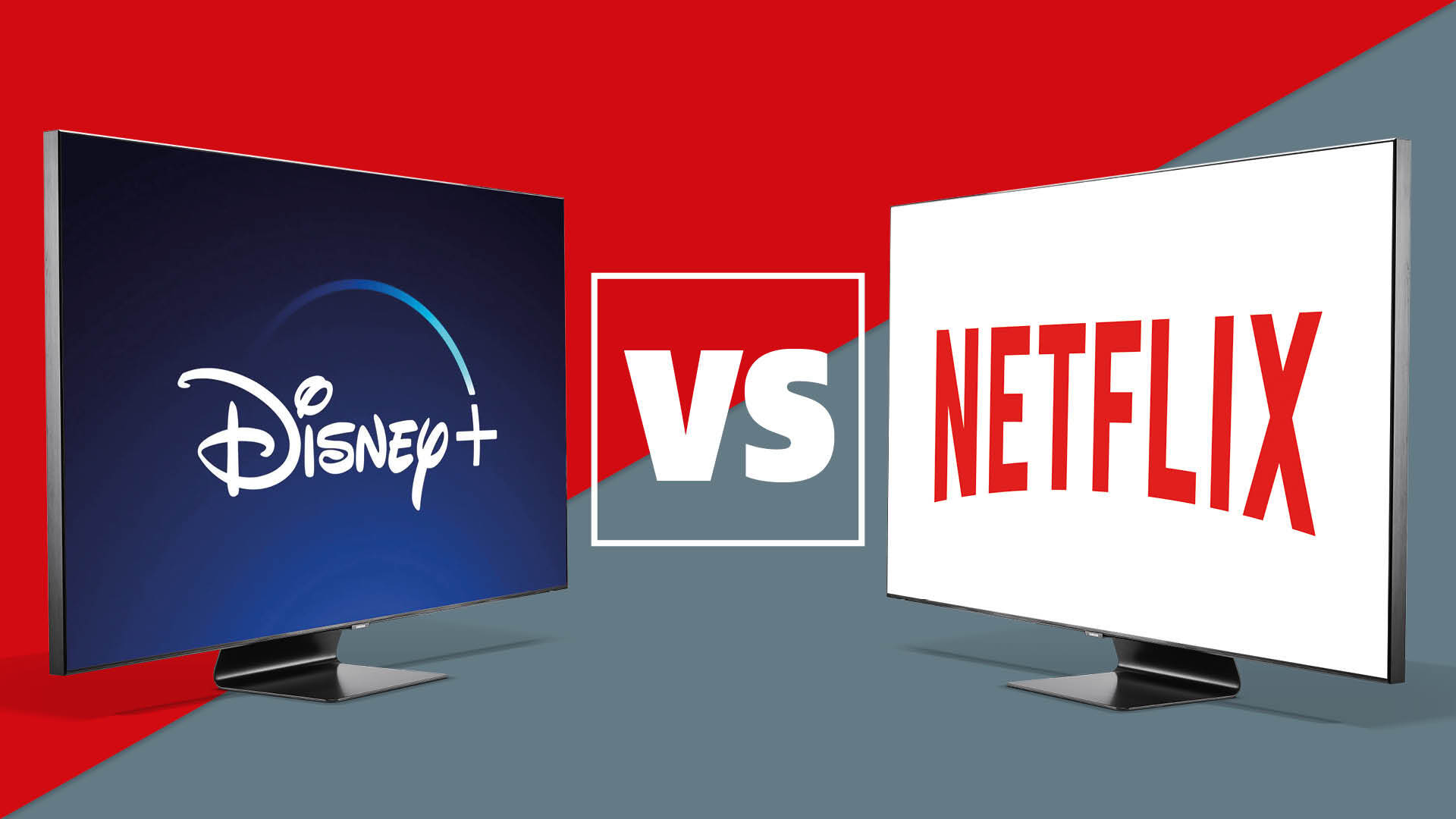
As with 4K, it's now hard to buy a TV that doesn't have a smart platform packed with streaming apps. Almost every TV will have Netflix and Amazon Prime Video on board, and Disney+ is fast approaching a similar level of ubiquity. Apple TV (which is great for pay-as-you-go movies as well as the Apple TV+ subscription service) is becoming increasingly common, too.
You'd have thought that BBC iPlayer, ITV Player, All 4 and My5 would be present on every TV available in the UK, but there always seems to be one brand that's lacking (it was LG in 2020 and it's Sony in 2021) so do check before you buy if any of those are important to you.
Other apps that are less common but potentially worth looking out for include BT Sport, Now, Britbox, and music apps such as Spotify and Tidal.
Should you buy an OLED, QLED or LCD TV?
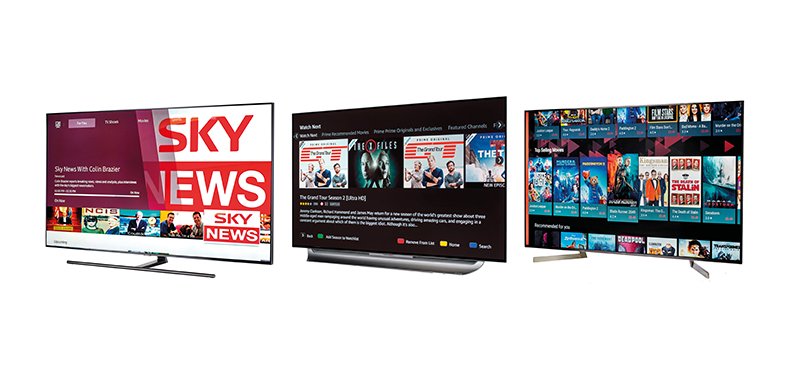
LCD TVs, which require a backlight usually made up of white LEDs to show a picture on the LCD panel, are available in a wide variety of screen sizes and, thanks in part to the technology's low cost of production, at affordable prices.
OLED (Organic Light-Emitting Diode) is a panel technology that uses self-emissive particles – so there's no need for a backlight. This allows OLED TVs to be unbelievably slim, while also offering convincing pitch-dark blacks, strong contrast and superb viewing angles. LG, Sony, Panasonic and Philips are the big brands with OLED TVs in their line-ups and, broadly speaking, they're excellent.
QLED (Quantum-dot Light-Emitting Diode), meanwhile, is Samsung's response to OLED. A QLED TV is an LCD TV but with a quantum dot coating over the backlight. However, the quantum dots (tiny semiconductor particles) in current QLEDs do not emit their own light. So QLED TVs, like conventional LCDs, rely on a backlight. The advantages of a QLED TV? You tend to get brilliantly vibrant colours, plus bright, sharp and crisply detailed images. Samsung's QLEDs have got better and better over the years, existing as a fine alternative to OLEDs TVs. Interestingly, though, Samsung is set to launch its own OLED TVs in 2022.
Useful links
- Looking for a bargain? Here are the best cheap TVs
- Hardcore gamer? These are the very best gaming TVs
- Need a certain size? We've rounded-up the best 55-inch TVs
- Need something bigger? What about the best 65-inch TVs
- Want a future-proof TV? Here are the best 8K TVs

Tom Parsons has been writing about TV, AV and hi-fi products (not to mention plenty of other 'gadgets' and even cars) for over 15 years. He began his career as What Hi-Fi?'s Staff Writer and is now the TV and AV Editor. In between, he worked as Reviews Editor and then Deputy Editor at Stuff, and over the years has had his work featured in publications such as T3, The Telegraph and Louder. He's also appeared on BBC News, BBC World Service, BBC Radio 4 and Sky Swipe. In his spare time Tom is a runner and gamer.
70 Inch Tvs At Best Buy
Source: https://www.whathifi.com/best-buys/best-tv
Posted by: patelstemed1965.blogspot.com

0 Response to "70 Inch Tvs At Best Buy"
Post a Comment